Choosing how to tuck a greenhouse into a forgotten corner can be surprisingly liberating: you gain year-round harvests without giving up the heart of the yard, turn bare walls into passive solar heaters, and create a protected micro-garden that looks as good as it grows. Horticultural extensions remind us that orientation, ventilation, and insulation matter even in compact builds, while new kits, recycled materials, and vertical systems let almost any gardener claim a sunny niche for tomatoes or orchids.
1. Lean-To Corner Greenhouse for Maximum Yard Space
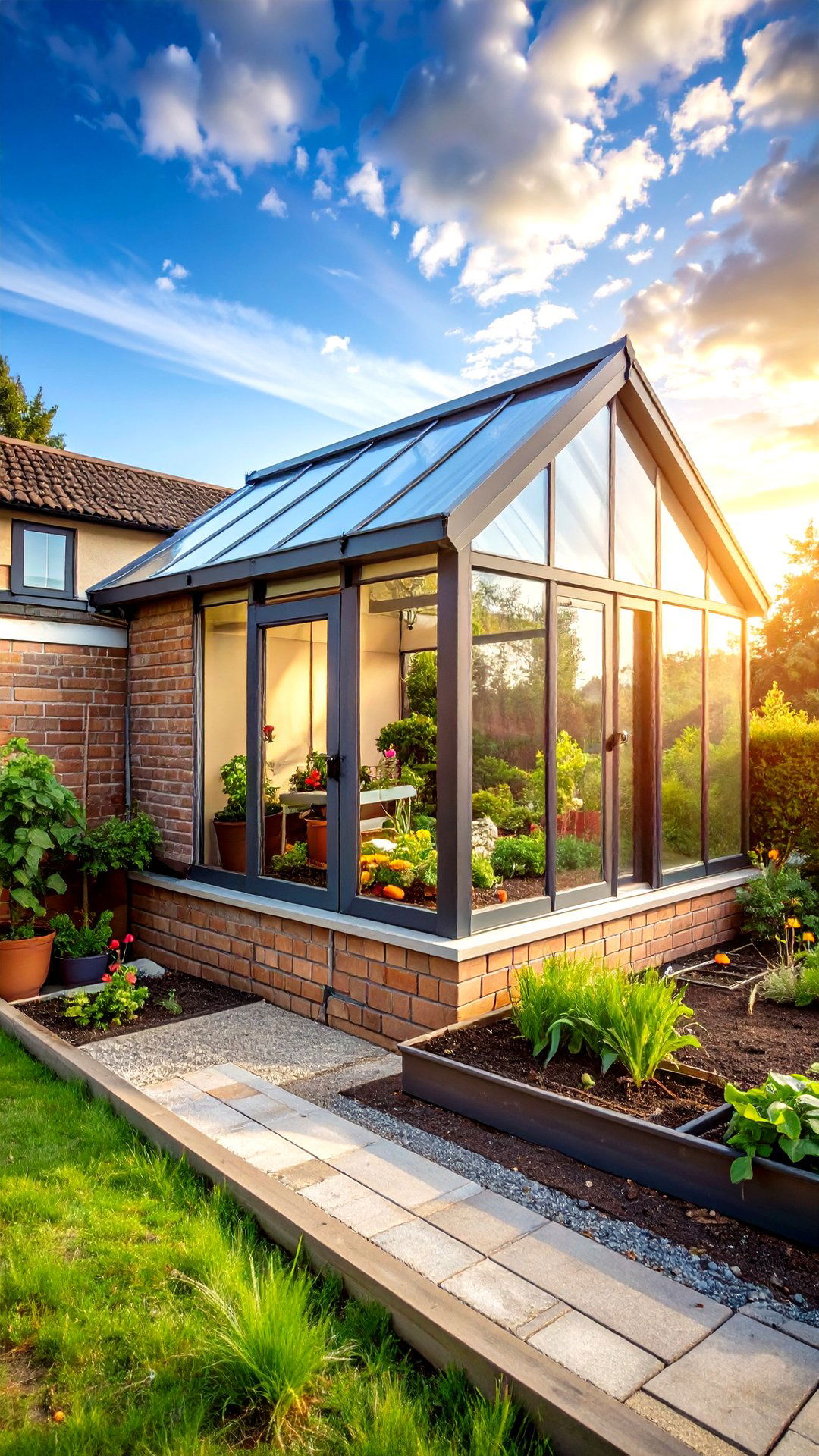
A lean-to corner greenhouse hugs two existing walls, capturing residual household heat and leaving the rest of the lawn free for play or beds. A Canadian urban homesteader notes that attaching a greenhouse to masonry moderates winter lows and simplifies adding power or water lines. Bloggers who favor lean-to styles also highlight the “visual extension” effect — glass blurs the indoor-outdoor boundary and draws visitors toward the garden rather than hiding it behind structures. Install roof-to-ground polycarbonate on the sun-facing side, insulate the shared wall, and add a slim gutter so the footprint stays narrow yet productive.
2. Triangular Footprint Greenhouse Nestled into a Tight Corner
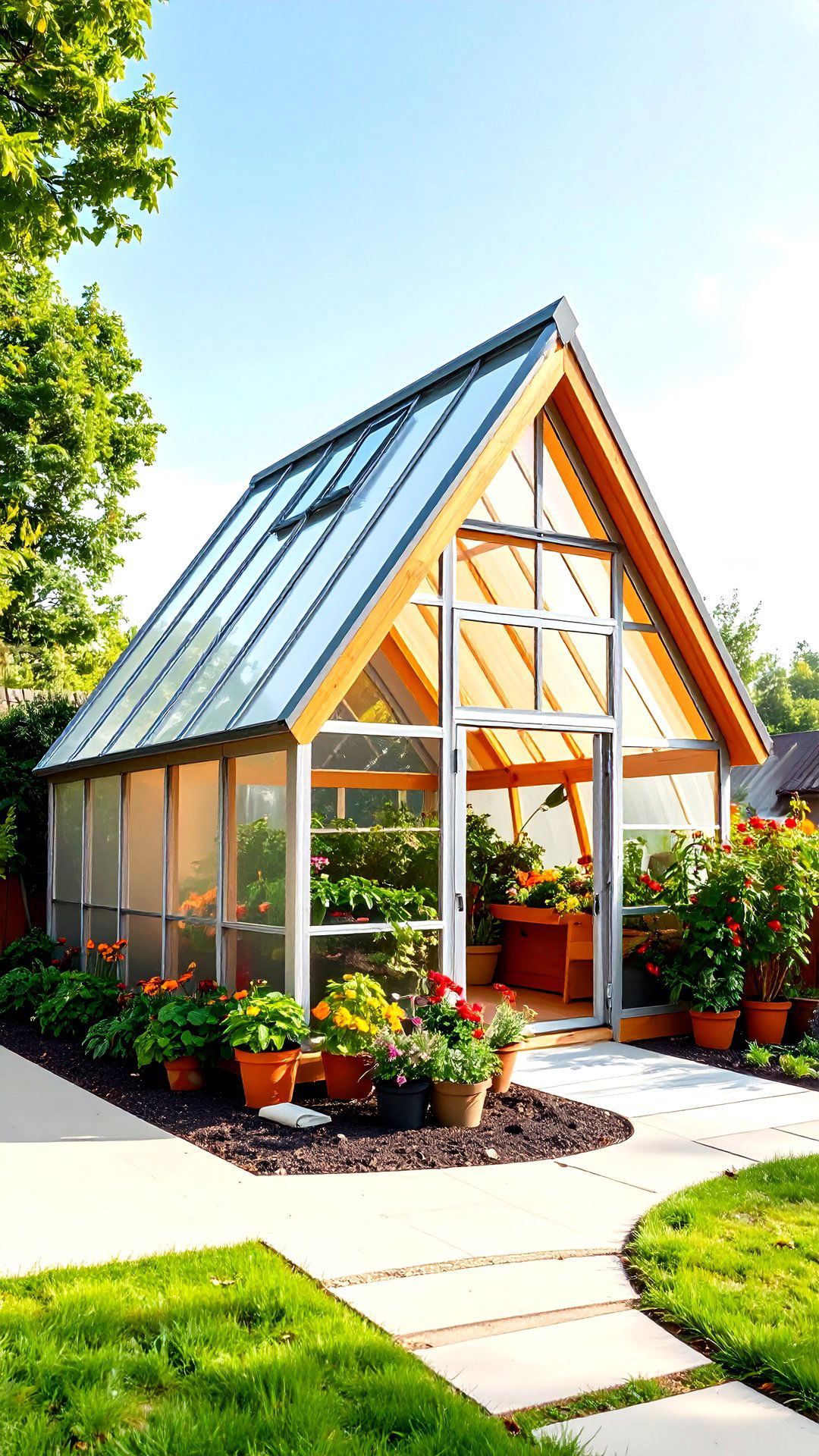
For wedges of ground too small for rectangles, a triangular corner greenhouse makes elegant use of the right-angle between fences. Pinterest makers show recycled lumber frames finished with clear corrugated plastic that slot perfectly into 90-degree edges. Commercial triangle kits feature aluminum skeletons and glazed panes that shed wind efficiently and reduce material cost by up to 15 %. Orient the hypotenuse toward the south-southwest, hinge a vent at the apex for stack-effect airflow, and you’ll turn an overlooked nook into a surprisingly roomy seed-starting studio.
3. Hexagonal Corner Greenhouse for 360° Sunlight
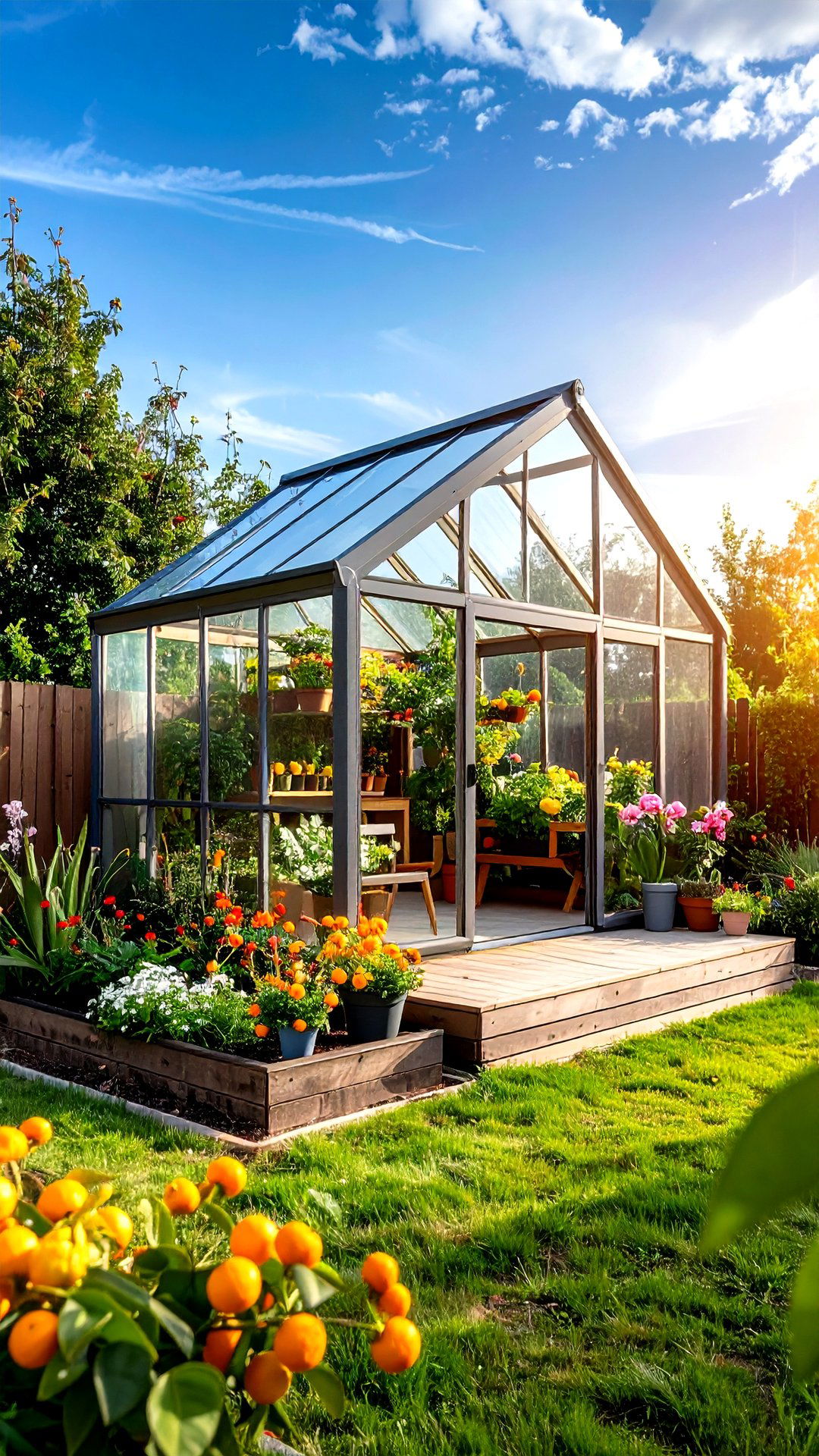
Unlike straight-line sheds, a hexagonal corner greenhouse captures light from multiple angles, meaning seedlings avoid “leaning” toward one side. Palram’s Oasis series explains how alternate twin-wall and clear panels diffuse harsh midday rays while letting gentle morning light stream across benches. Six equal faces also distribute snow and wind loads evenly, so you can rotate shelving to follow the seasons rather than relocating plants. Tuck one flat side against your fence and let the remaining five facets open a panoramic view of citrus, chilies, or showy orchids.
4. Geodesic Dome Corner Greenhouse Built for Windy Sites
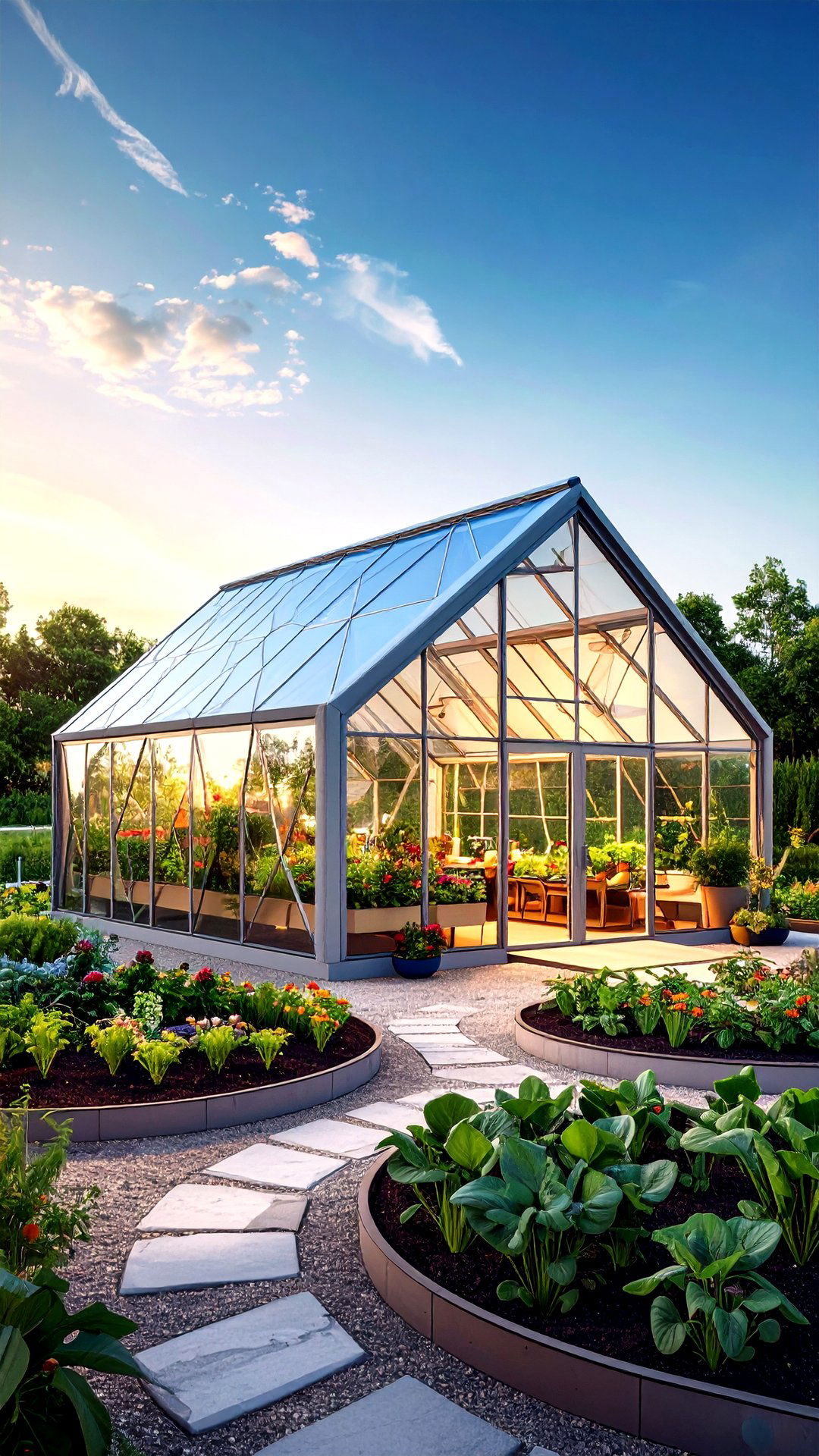
Certainly, a geodesic dome greenhouse parked in a blustery corner looks futuristic, yet its physics-driven triangles shed gales far better than boxy frames. Growing Spaces engineers certify their domes for 115 mph gusts, noting that wind “flows around” rather than slamming into broad walls. The self-supporting struts mean no interior posts, so you can circle raised beds inside the curve and still squeeze the sphere snugly between walls. Add a north-side reflective panel and the dome’s floor-to-ceiling headroom becomes a citrus grove instead of wasted height.
5. Sawtooth-Roof Corner Greenhouse for Passive Venting
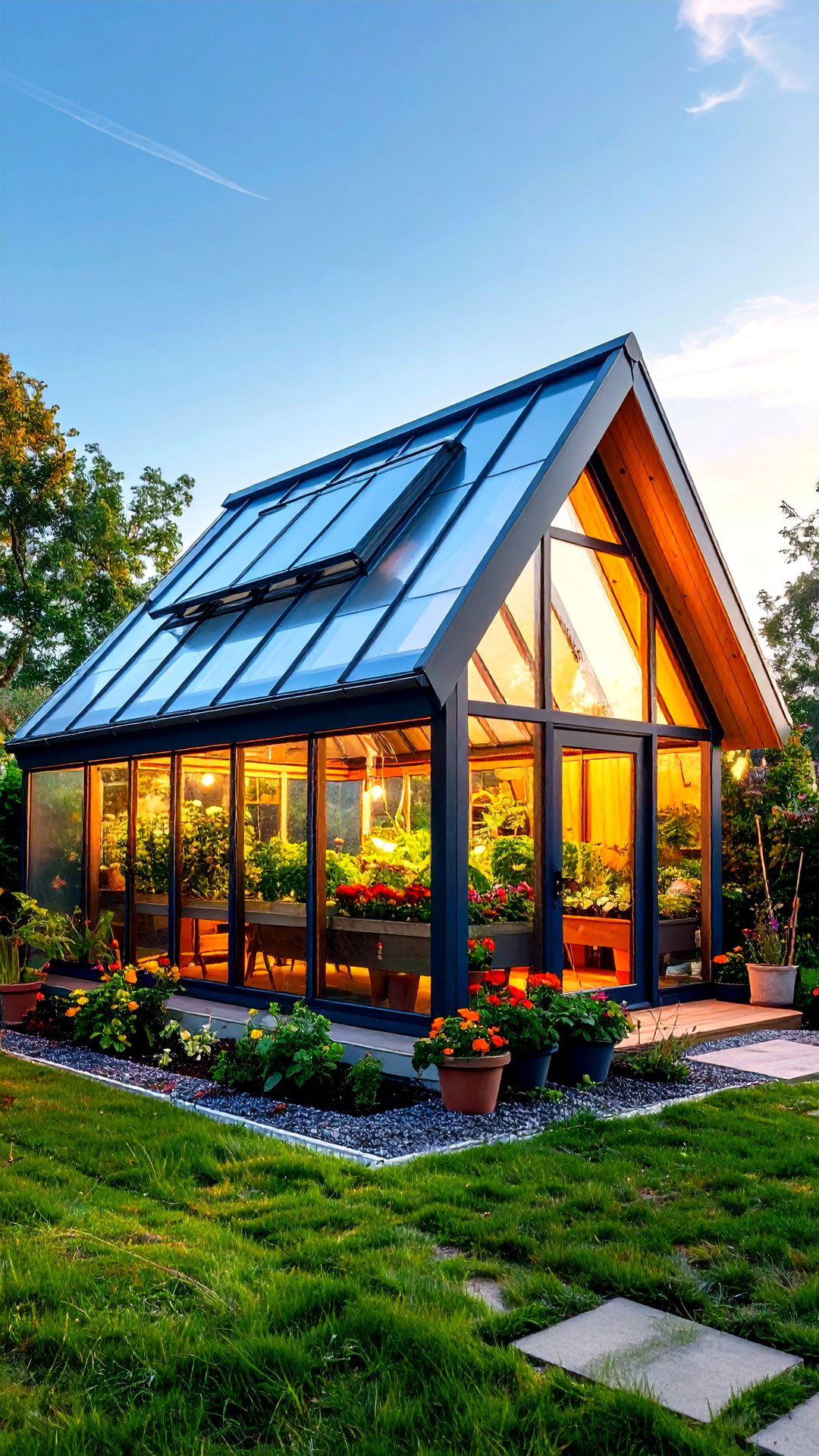
Owing to its staggered ridge line, a sawtooth-roof corner greenhouse expels excess heat without electric fans. Structural notes on double half-arch “sawtooth” designs emphasize how the shorter upper arch acts as a permanent vent, letting hot air escape while drawing in cooler air near ground level. Placing that vent toward prevailing breezes multiplies the effect, keeping lettuce crisp even in midsummer. The asymmetrical profile also deflects wind pressure away from vulnerable roof joints — handy when the greenhouse sits at the garden’s breeziest corner.
6. Balcony Corner Mini Greenhouse for Urban Growers
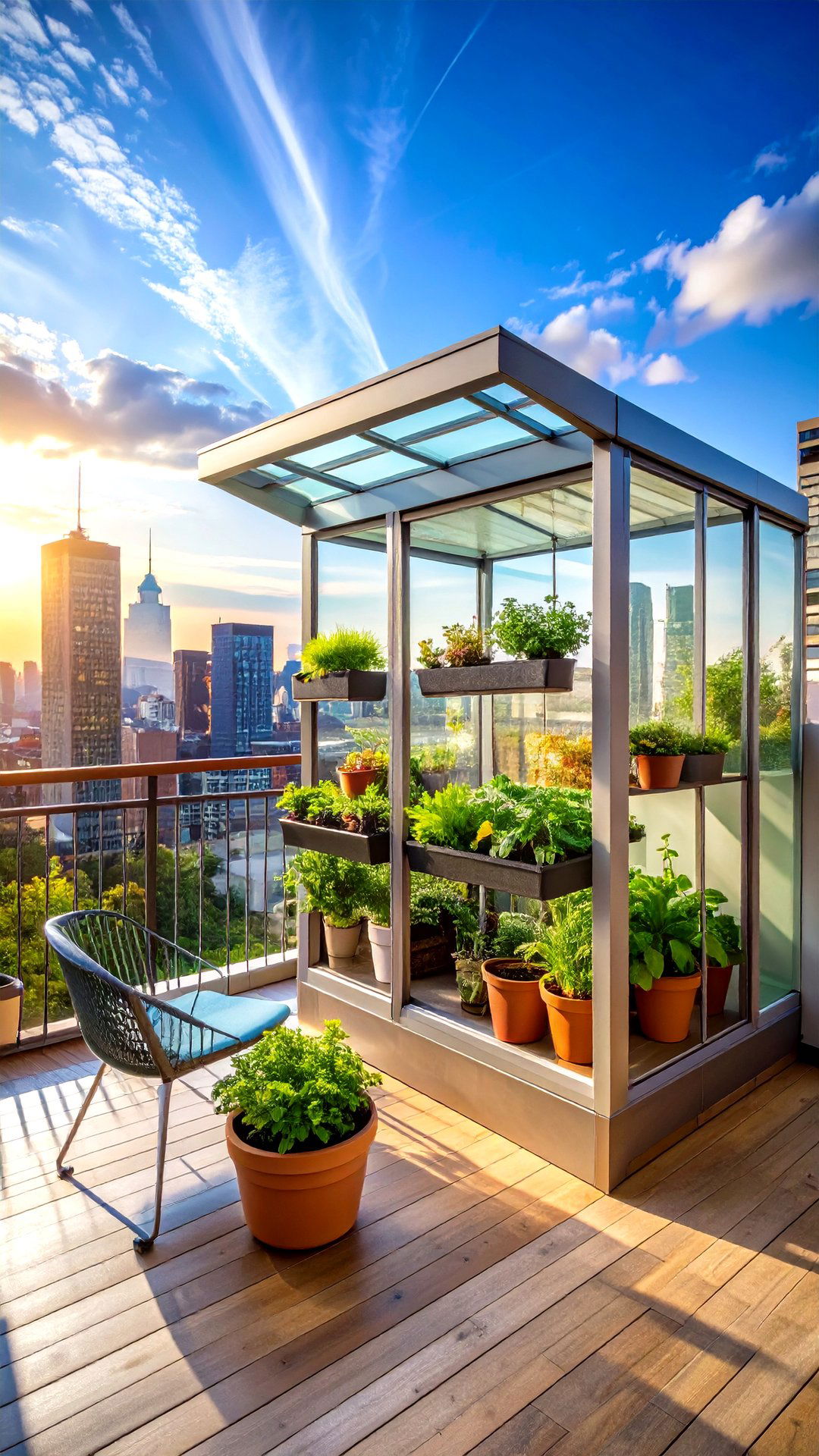
Take a cramped high-rise balcony and add a purpose-built corner greenhouse no deeper than a café chair; suddenly salads grow above city traffic. Yardistry’s Urban model integrates an automatic roof vent so heat never builds to plant-wilting levels, even if you’re at work. Compact Juliana “City” boxes mount directly onto railings, letting renters cultivate peppers and basil without drilling into walls. Use self-watering tubs on the floor, suspend herbs on tension rods, and you’ll harvest dinner while barely brushing past the barbecue.
7. Vertical Hydroponic Tower Corner Greenhouse
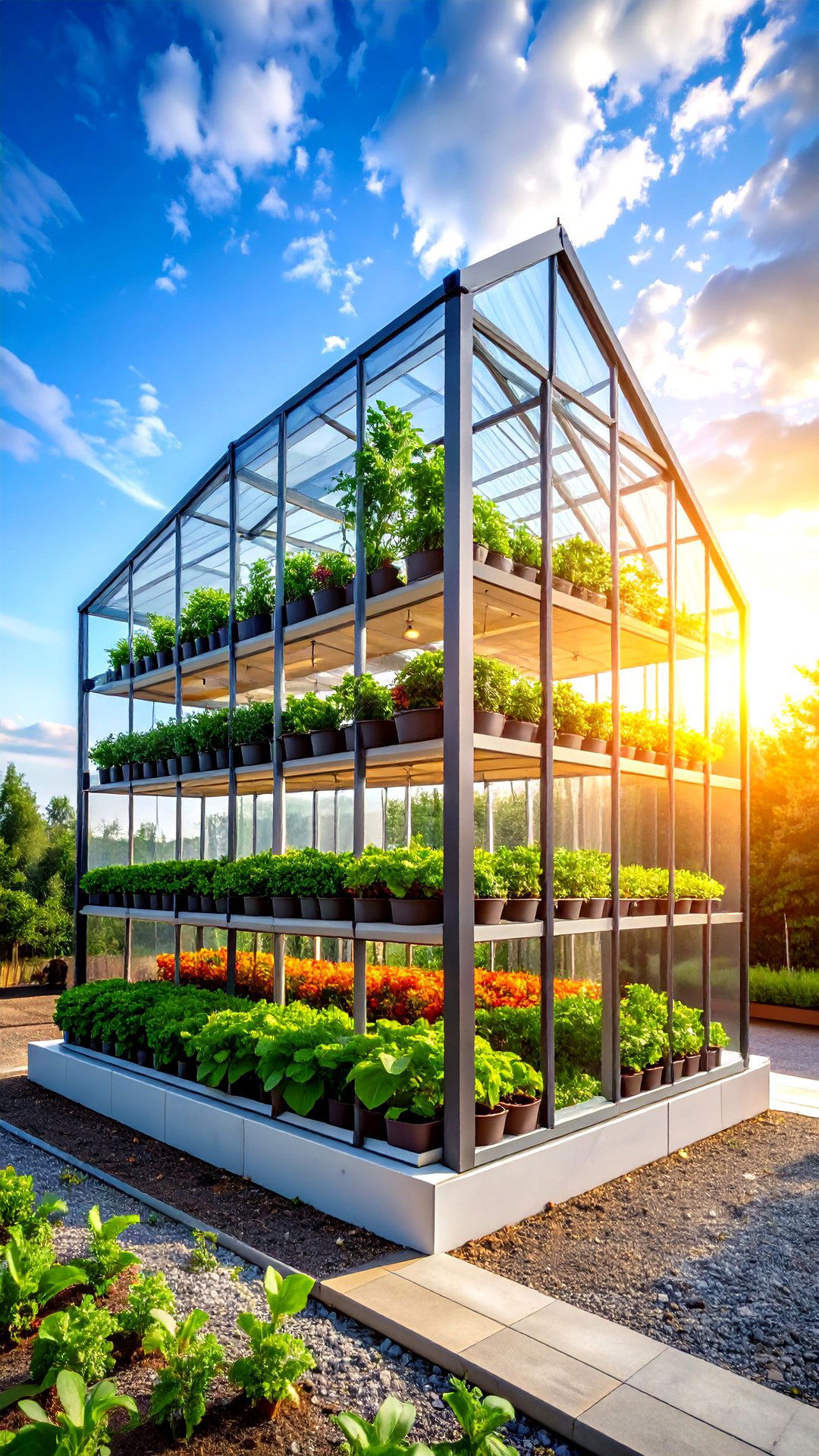
Bringing a vertical hydroponic tower inside a corner greenhouse multiplies plant density sixty-fold. Florida Extension explains that stacked columns feed crops with recirculating nutrient solution, eliminating the need for soil and delivering leafy greens every three weeks. Tower Farms report saving 75 % of floor space versus horizontal NFT channels — ideal when your greenhouse footprint is already triangular or wedge-shaped. Commercial Tower Garden systems even claim 90 % less water use, a win for drought-prone zones. Position the tower in the apex so every tier catches sun.
8. Cold-Frame Modules Joining to Form a Corner Greenhouse
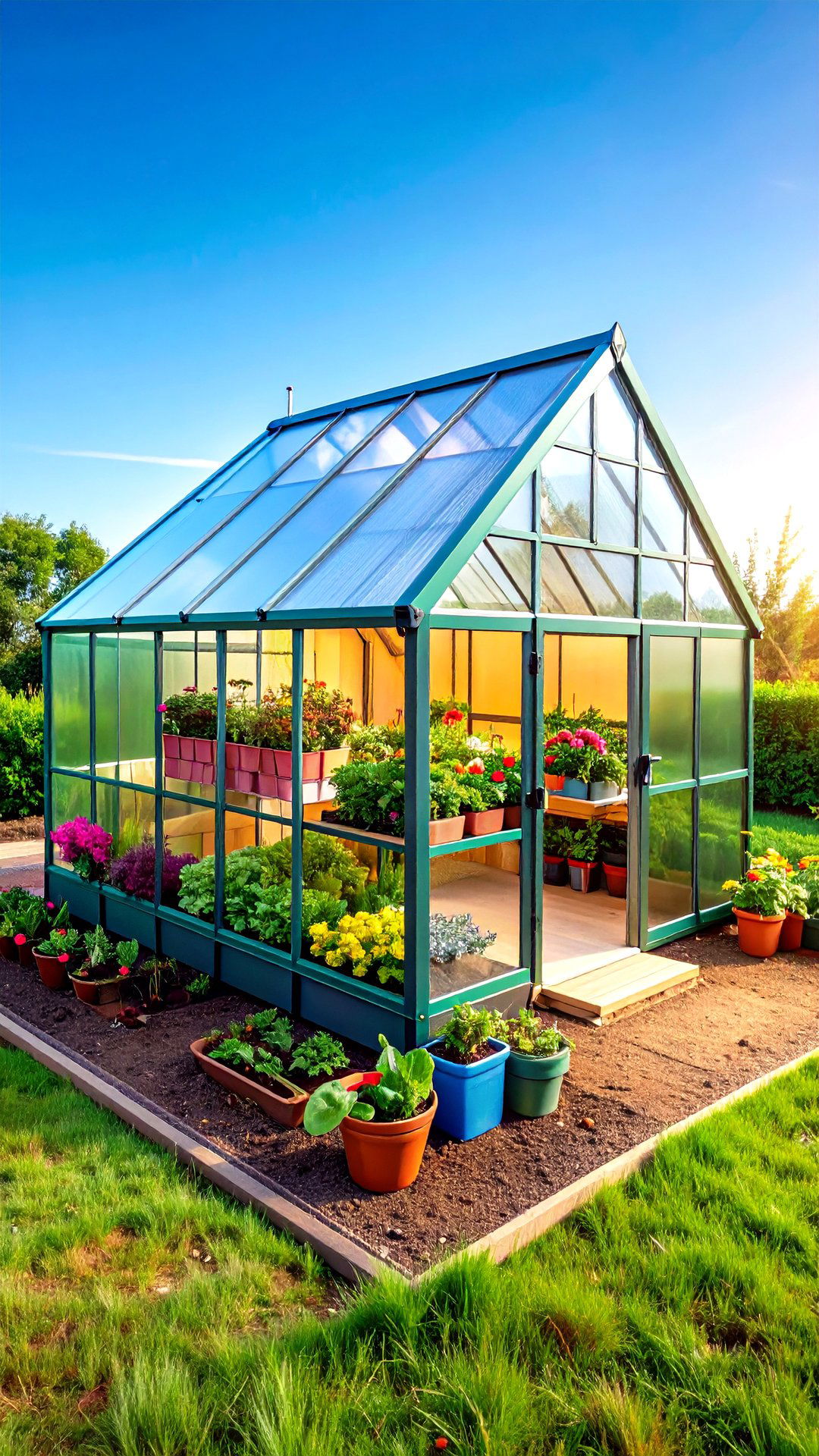
Another, wallet-friendly idea is to hinge two polycarbonate cold frames at right angles, creating a knee-high corner greenhouse that can be disassembled after spring. Costco’s Biostar frame shows child-safe rounded corners and automatic lid openers that pop at preset temperatures. GrowSpan mini frames add clip-on wind clamps so lids stay put during squalls. Joe Gardener’s tutorial reveals how simple lumber off-cuts convert these boxes into an elbow-shaped structure protecting trays of carrots or sweet peas weeks earlier than open soil.
9. Living Wall Planters Inside a Corner Greenhouse
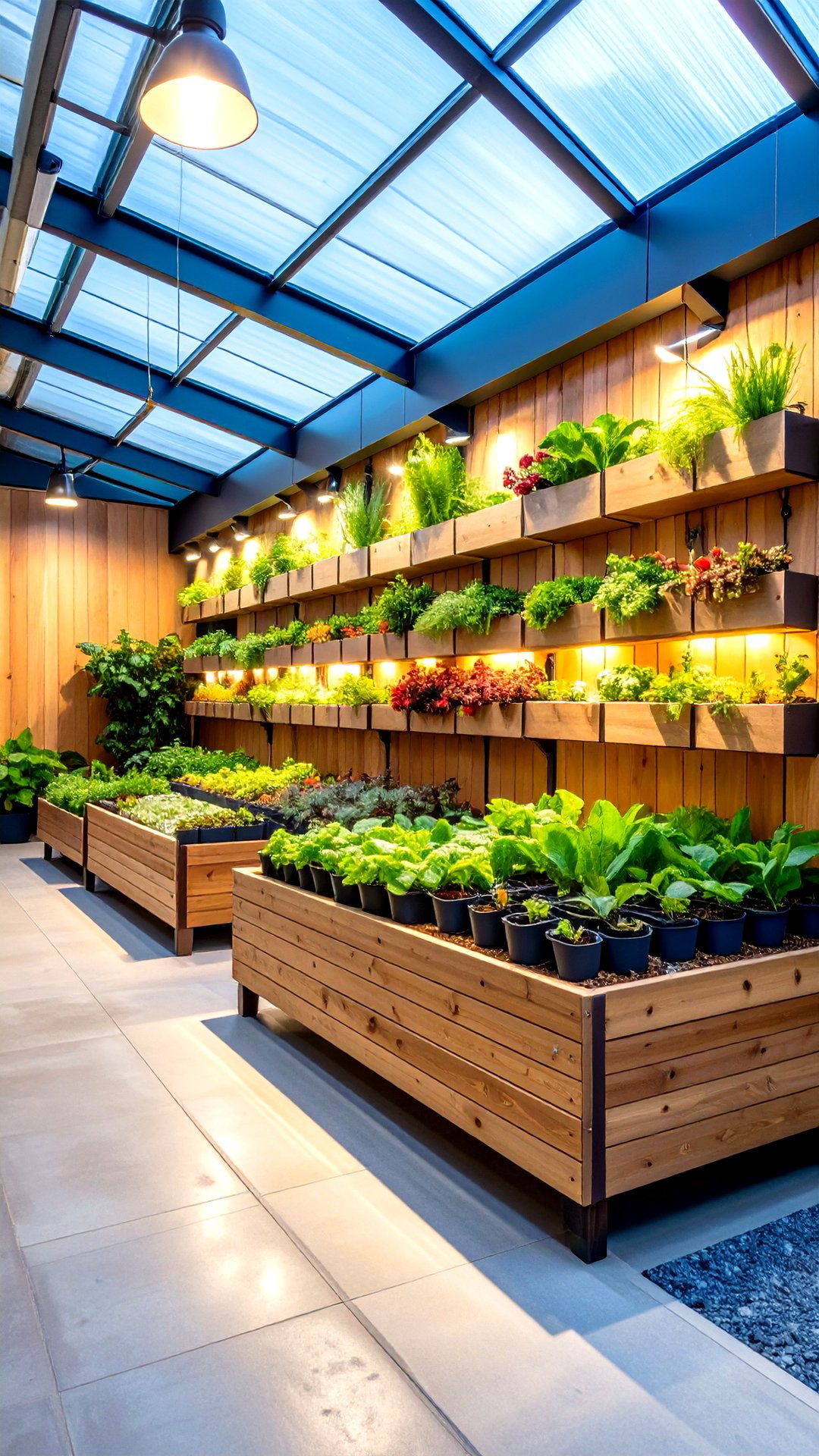
Looking for ornamental impact? Pocket wall planters line the opaque fence inside a corner greenhouse, turning dead space into a strawberry or fern mosaic. WallyGrow felt pockets come in modular grids; each cell drains into the next, preventing soggy feet. Gardeners note that staggered pocket layouts give every plant enough daylight even on narrow greenhouse walls. Pair with drip irrigation and you gain vertical harvests while freeing benches for seed trays.
10. Rolling Multi-Tier Corner Greenhouse on Locking Wheels

Despite limited square footage, a four-tier mobile greenhouse slides into the patio corner by day and rolls indoors during storms. Home-Complete’s 27-inch-wide model includes locking casters and a clear PVC shell, sheltering seedlings down to 0 °C when zipped. Wayfair lists 40-inch-wide shelving versions that still fit beneath eaves yet double outdoor surface area for peppers and annuals. Stow tomato flats up top, tuck tools below, and simply pivot the rack to chase sun as seasons shift.
11. Part-Shade Corner Greenhouse with Removable Shade Cloth
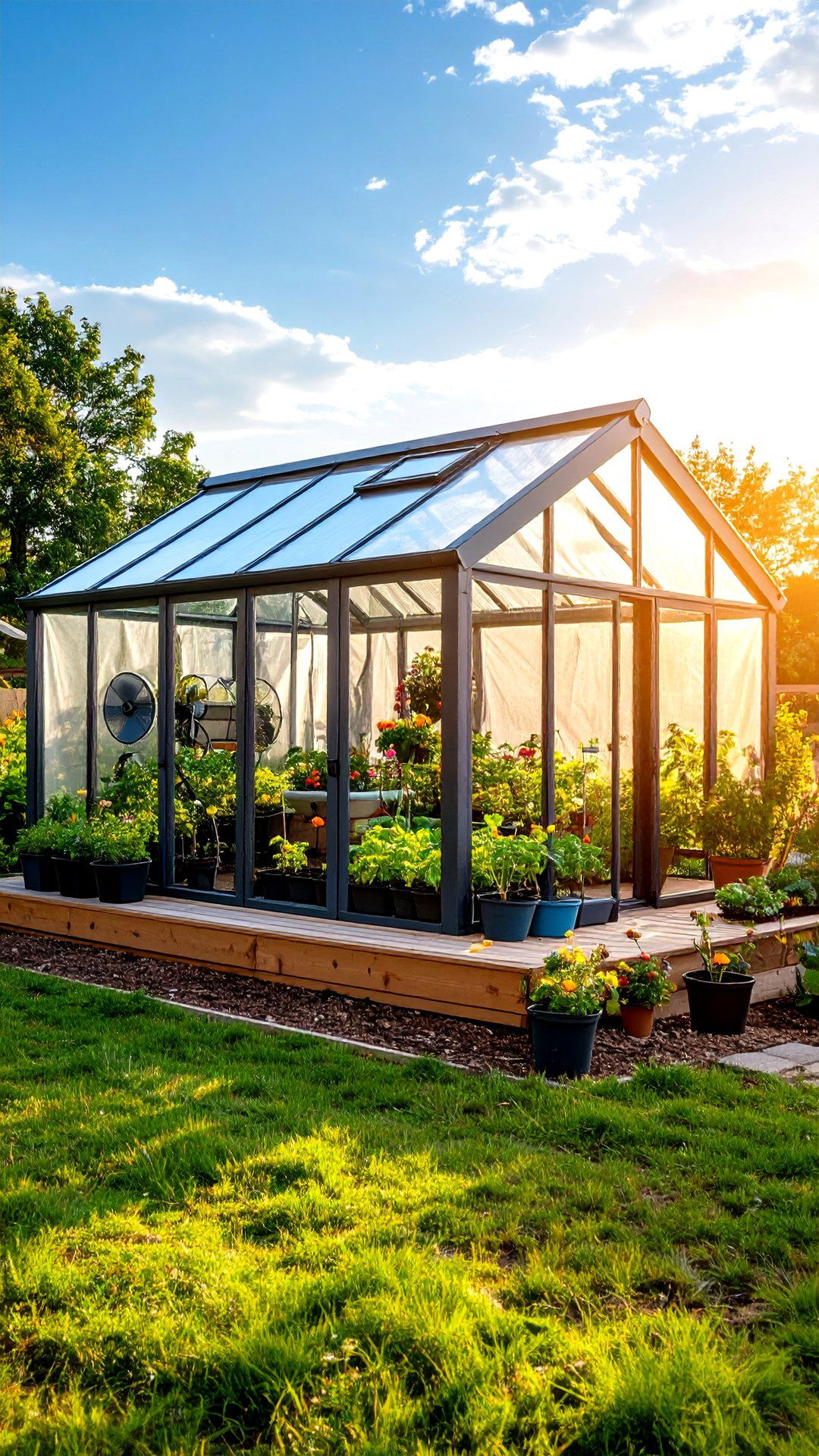
Although blazing summer rays can scorch plants, experts warn that throwing a corner greenhouse into full sun also risks overheating. Homes & Gardens’ greenhouse-mistake roundup advises fitting shade cloth or choosing partial shade to keep temperatures below 30 °C. The same guide stresses airflow — crack roof vents or add clip-on fans so humid air doesn’t stagnate. Houseplant writers echo that consistent ventilation cuts foliar disease and stress. By using 40 % shade netting on the brightest wall, you safeguard seedlings while still banking solar warmth.
12. Passive Solar Southwest-Facing Corner Greenhouse
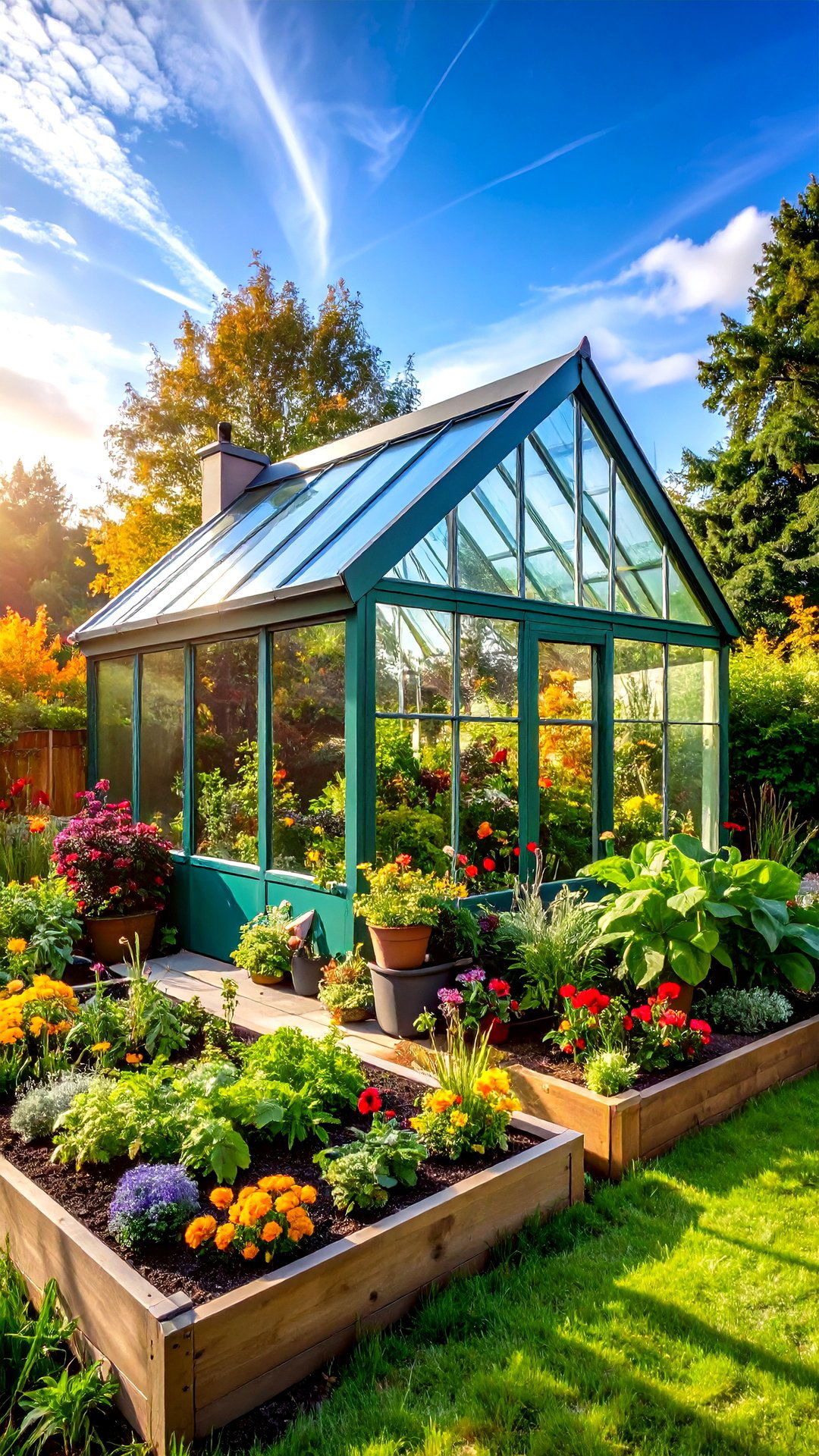
Certainly, passive solar design can slash heating bills in a corner greenhouse. Ceres Greenhouse Solutions demonstrates how south- or southwest-oriented glazing paired with insulated north walls maximizes winter light and reflects heat back onto beds. Plews Garden Design concurs: in small squarehouses, a southwest face captures the longest sun exposure. Complement this with RHS advice on planning borders — study shadows cast by fences so your glass stays in the brightest patch year-round.
13. Corner Greenhouse with Automatic Roof Vent Openers
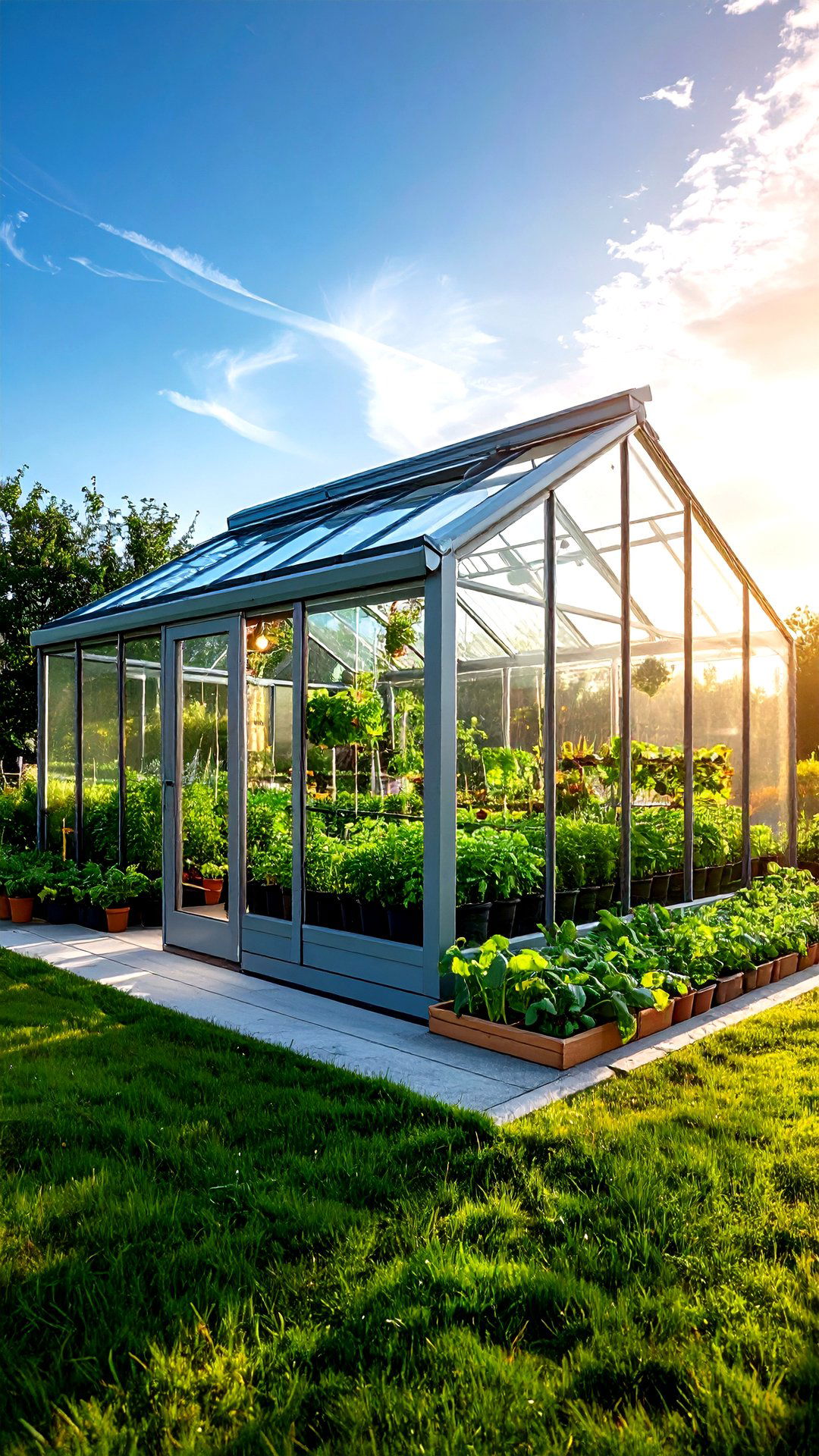
Unlike manual louvres, modern roof pistons lift panes when internal temperatures reach a set point and close as the air cools — ideal if your corner greenhouse sits out of sight. Yardistry’s Urban Greenhouse offers a factory-installed opener that protects crops during unexpected heat spikes. Fit a second piston on the opposite slope for cross-drafting, and you’ll stabilize humidity without electrical wiring or daily check-ins.
14. Corner Greenhouse with Built-In Gutter for Rainwater Harvest
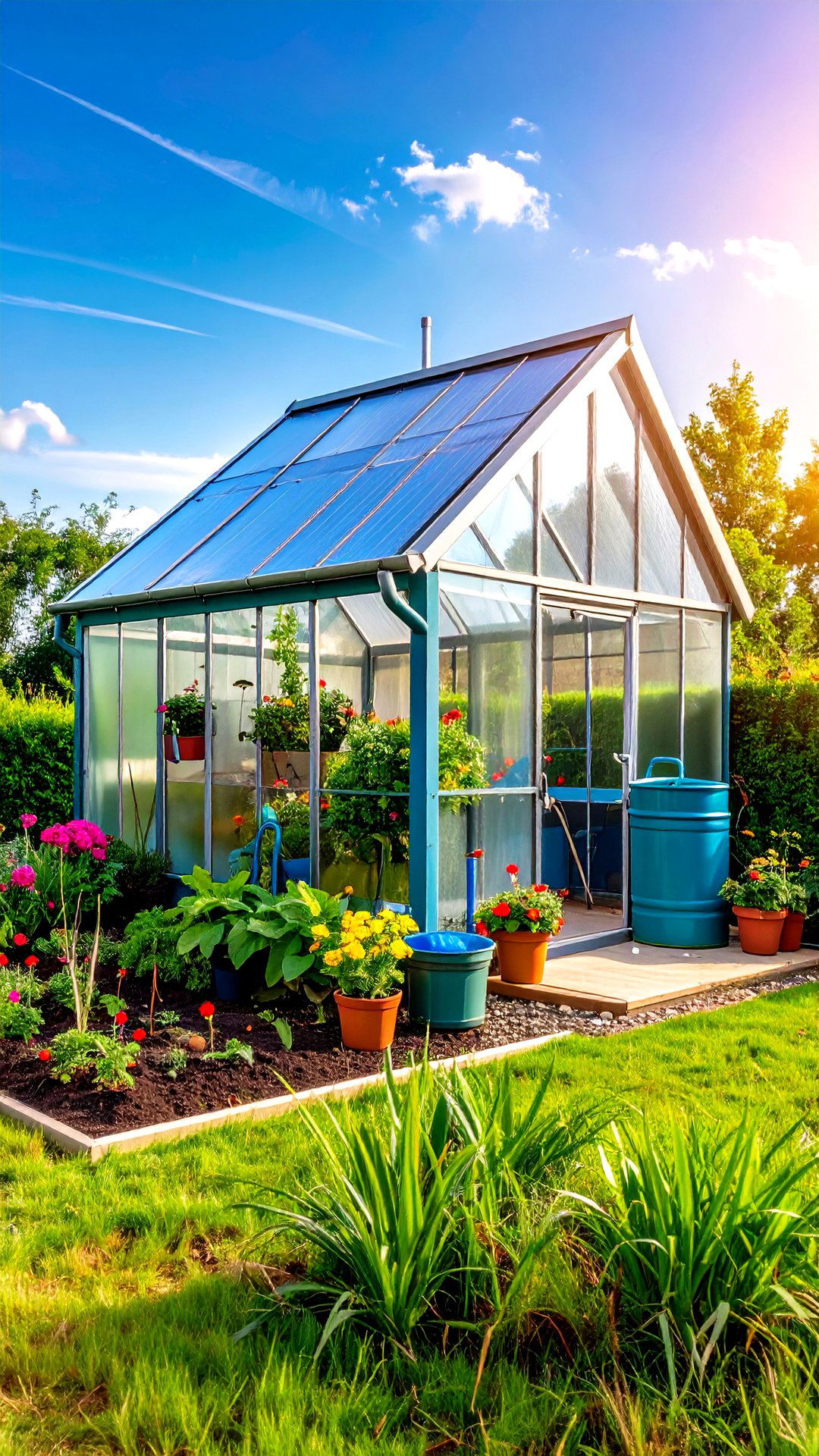
With many corners already near downspouts, a greenhouse gutter is natural. Palram’s Oasis hexagonal kits include molded aluminum channels and outlets ready for flex-hose collection, preventing roof run-off from flooding paths. Direct the water into a food-safe barrel, add a solar pump, and gravity-feed drip lines keep beds moist even during hose bans.
15. Corner Greenhouse Featuring Fold-Out Shelving Benches
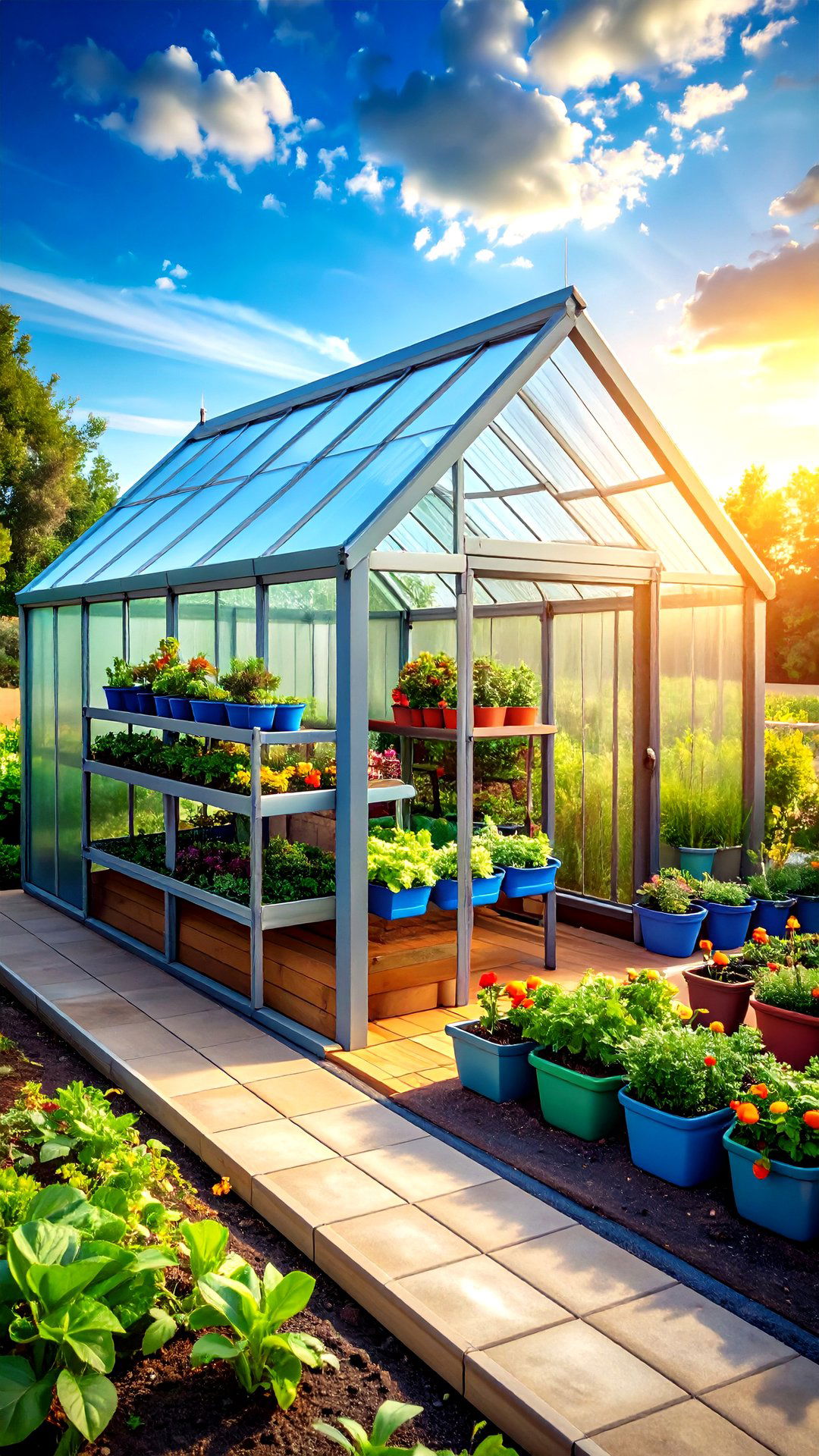
Fold-down galvanized benches double workspace without cramping aisles. Eartheasy supplies a bi-level 45-inch workbench for hexagonal kits, sized for seed trays beneath and vine crops above. Rolling greenhouse racks echo the idea — slide out a shelf, pot up seedlings, then flip it flat so walking space returns. This modular mindset suits corners, where every centimeter must earn its keep.
16. Lean-To Conservatory Corner Greenhouse for Relaxation
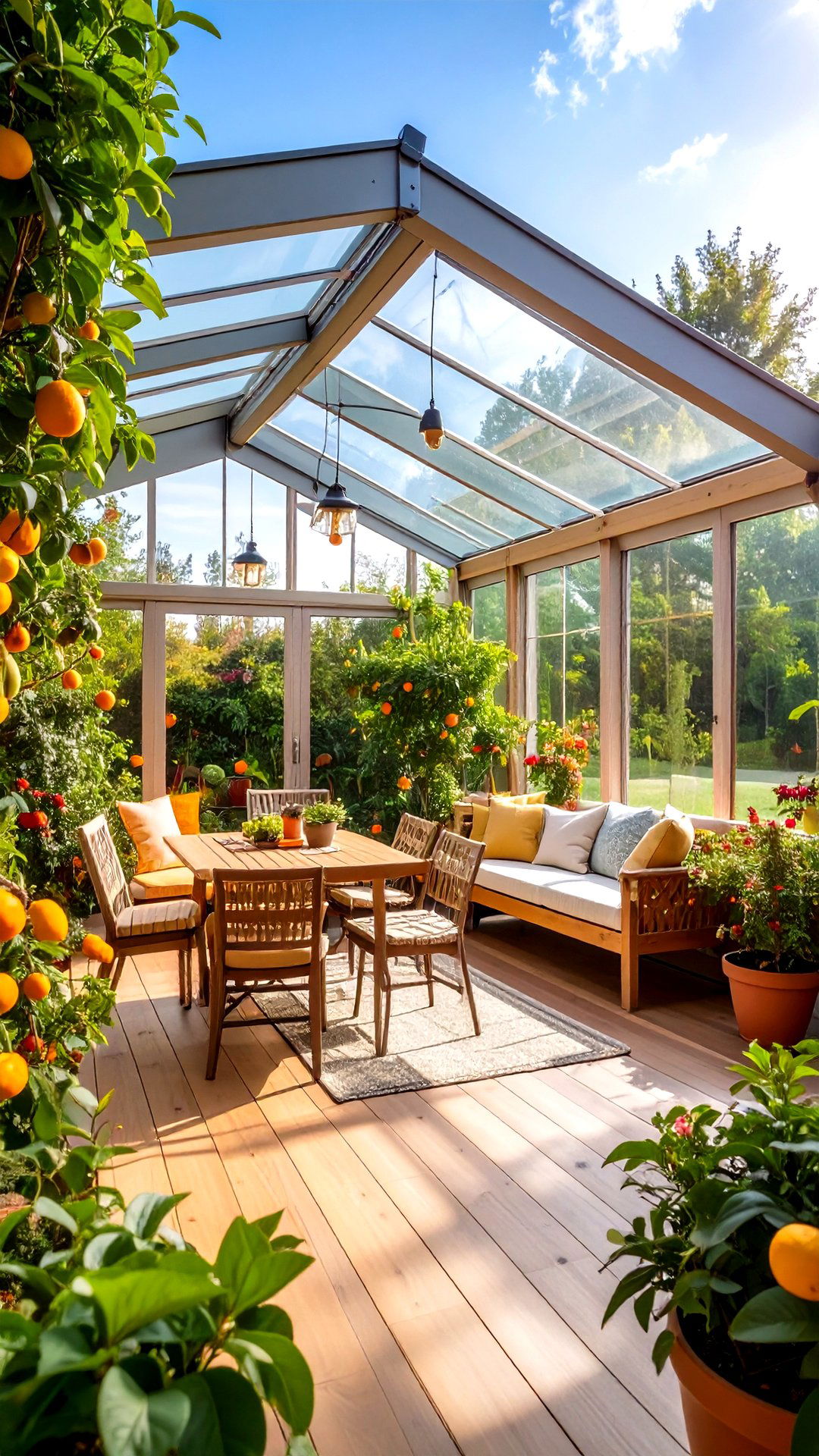
Another design twist merges leisure and propagation. By glazing the lean-to roof with low-iron glass and adding a small bistro set among the citrus, homeowners find the corner greenhouse becomes an all-season sunroom. Lean-to advocates note the greenhouse’s slim profile still preserves lawn for other projects. Insulate the knee wall, install under-bench heating cables, and you’ll sip tea beside ripening kumquats even on frosty mornings.
17. Early-Start Seedling Corner Greenhouse with Twin-Wall Panels
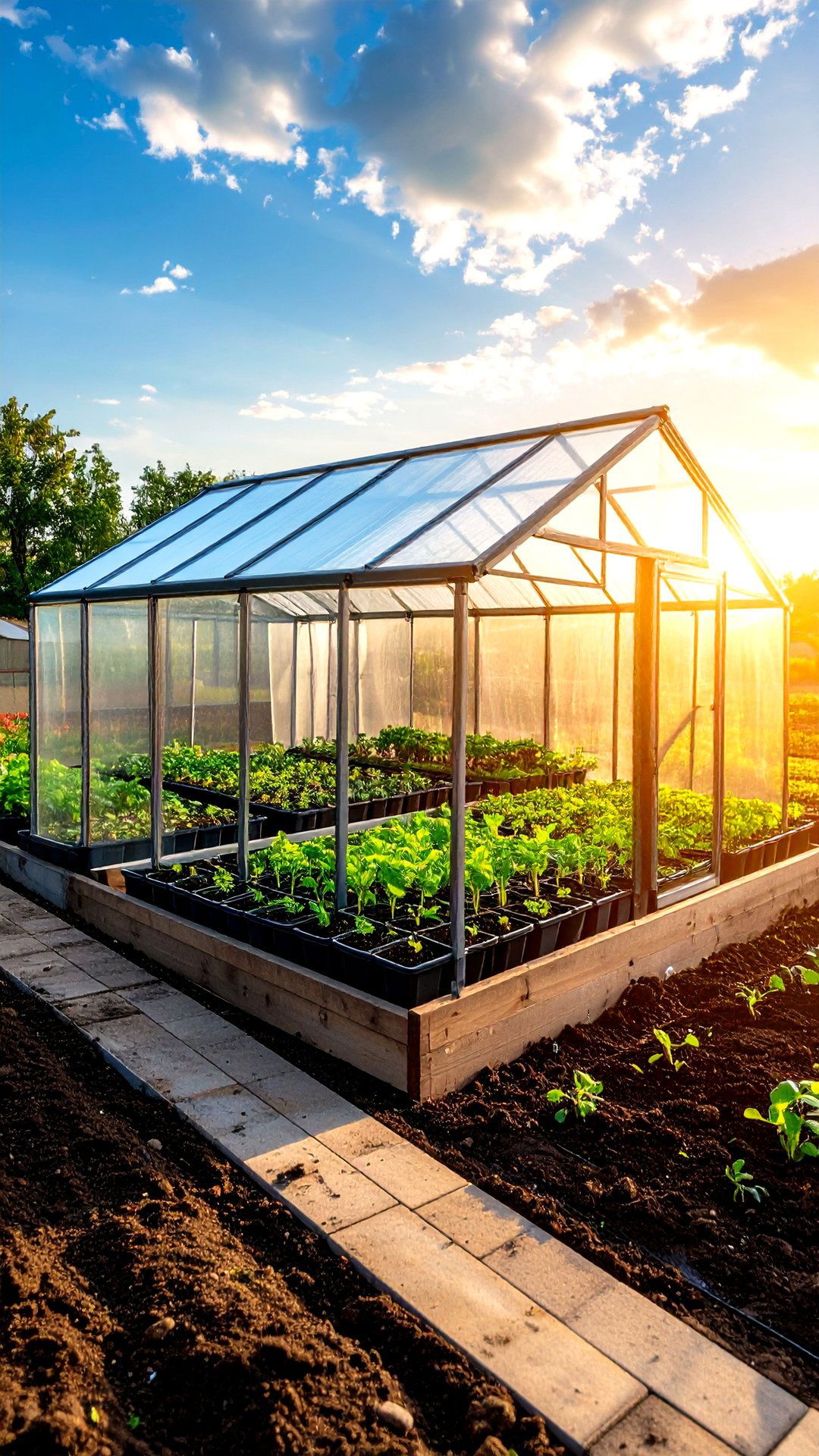
Twin-wall polycarbonate traps insulating air, creating a mini-thermos effect ideal for advancing spring sowings in a corner greenhouse. Palram specifies 4 mm twin-wall roof sheets that blunt hail and hold warmth overnight. Juwel’s cold-frame lids use 8 mm double glazing for even higher R-values, letting you germinate spinach when outside nights still dip to minus figures. Combine panels with a small soil-heating cable and seedlings sprint ahead.
18. Windbreak-Sheltered Corner Greenhouse for Exposed Yards

Assessing site microclimates first can save later regret. RHS guidance on windbreaks explains that staggered hedges or permeable fences filter gusts better than solid walls, reducing turbulence that can rip poly sheeting. Plant a belt of evergreen bay or bamboo on the windward side of your corner greenhouse, leaving at least twice the hedge height for airflow to slow before reaching glass.
19. Recycled-Window Corner Greenhouse DIY
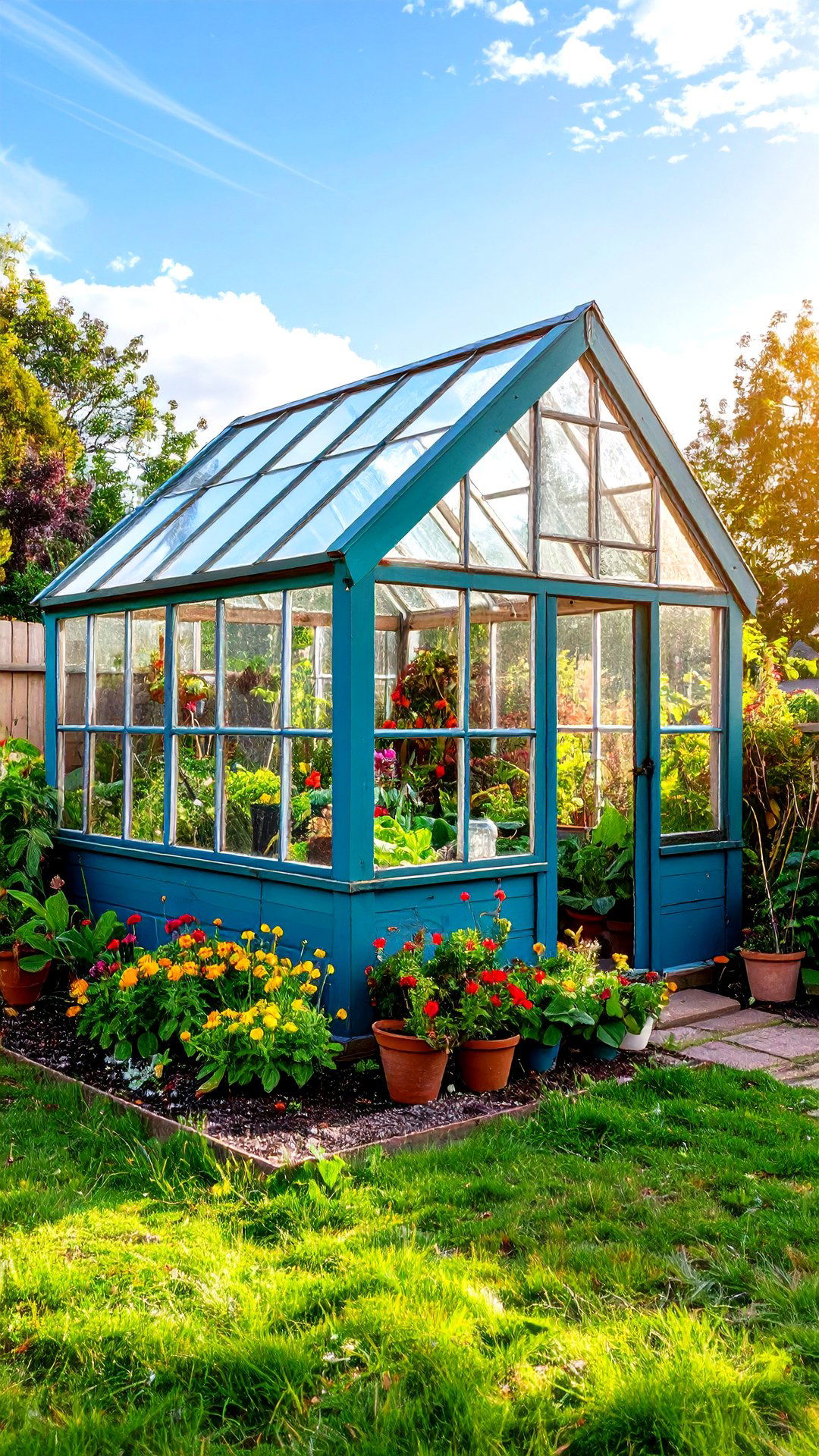
Surprisingly, vintage sash windows can be up-cycled into a quirky corner greenhouse for under $500, as Better Homes & Gardens reports. Homestead tutorials add that orienting the longest glazed wall south or southwest maximizes solar gain and offsets less-efficient single panes. Stagger windows so frames interlock at 90 degrees, reinforce corners with pressure-treated posts, and seal gaps with weather-strip to keep drafts at bay.
20. Seasonal Pop-Up Plastic Corner Greenhouse
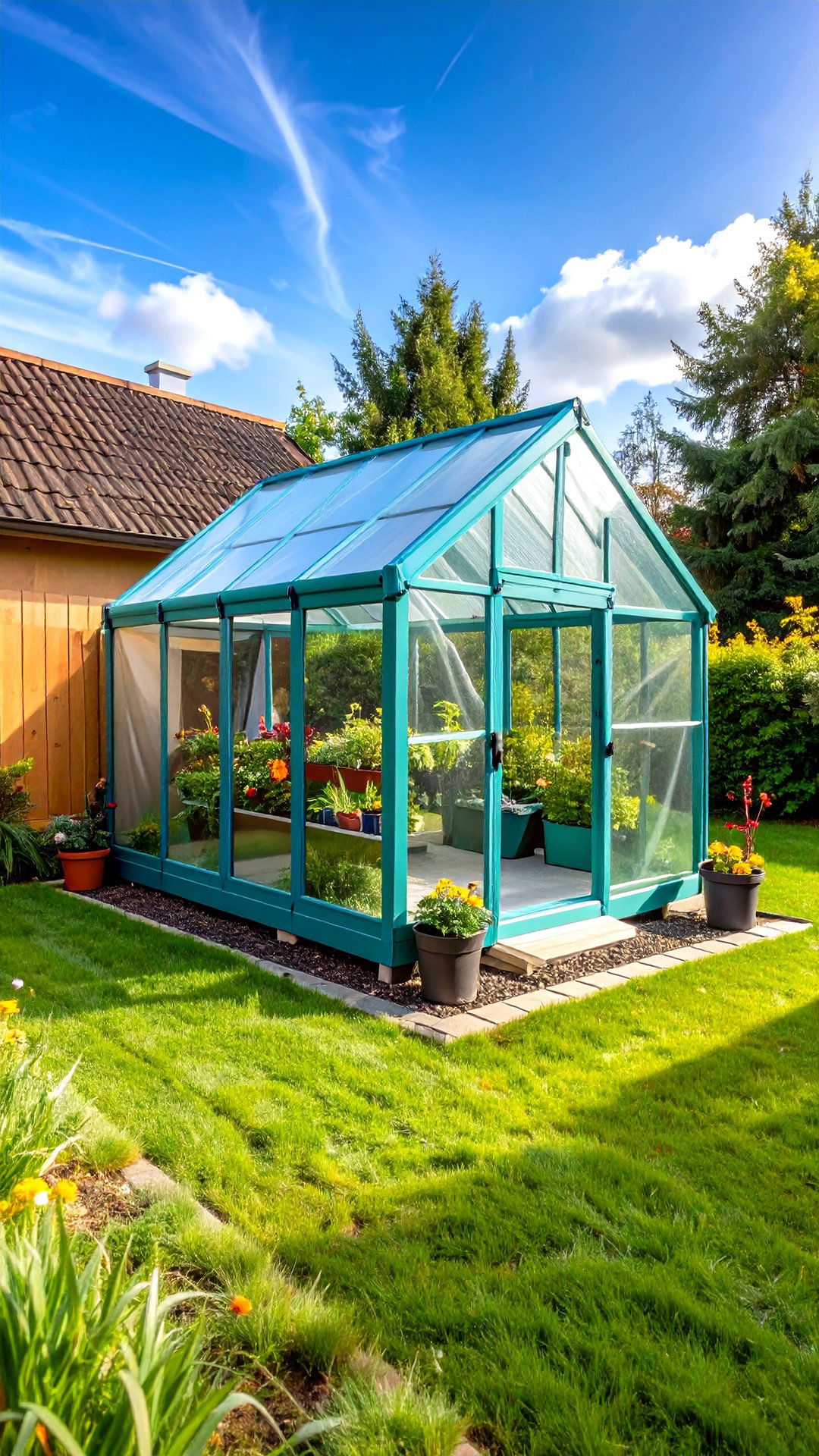
For renters or growers needing only summer protection, a pop-up PVC corner greenhouse offers zero-tool assembly. Mini models on Amazon unzip for quick access and collapse flat for winter storage. GrowSpan’s rigid cold frames can likewise be lifted off beds once temperatures stabilize, letting carrots soak up rain until autumn. Anchor any pop-up with ground stakes or patio pavers so spring gusts don’t redecorate the neighborhood.
21. Insulated Twin-Wall Polycarbonate Corner Greenhouse
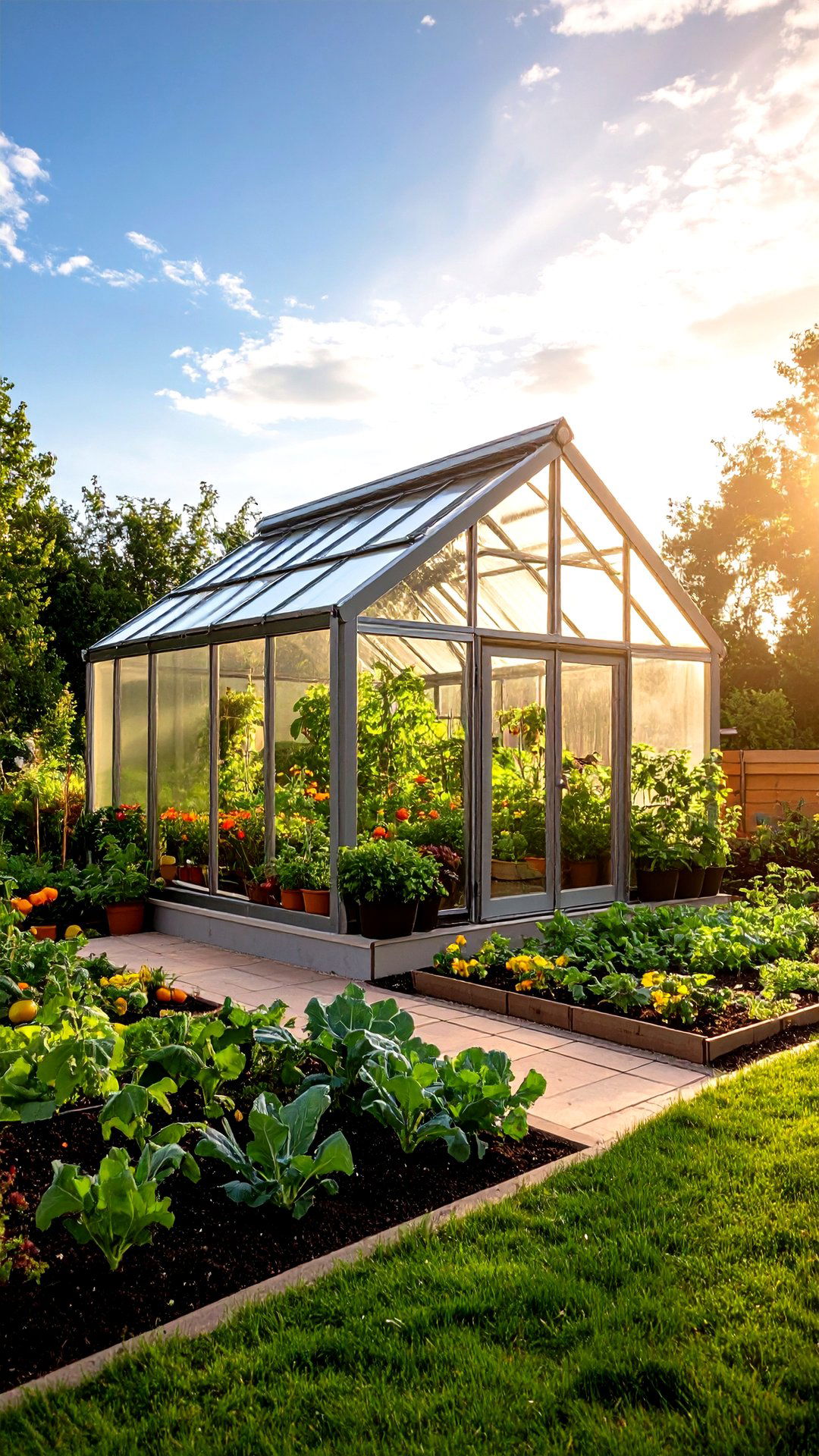
When year-round production is the goal, upgrade all glazing to twin-wall or even triple-wall sheets. Hexagonal kits with 4 mm twin-wall roofs balance weight and light diffusion while shrugging off hail. Combine that with foam-board skirts around the foundation and door gaskets, and the corner greenhouse will coast above freezing with only passive solar in mild winters.
22. Reflective Surfaces to Brighten a Shady Corner Greenhouse

Despite tall fences casting shadows, bouncing sunlight back into beds is easy. Spray the interior of north-facing plywood walls with high-albedo white paint or staple Mylar film so diffuse light reaches lower leaves — a trick many dome owners use to even out illumination. Position reflective rain barrels or galvanized benches to double as light banks and thermal mass.
23. Microclimate-Tailored Corner Greenhouse Placement
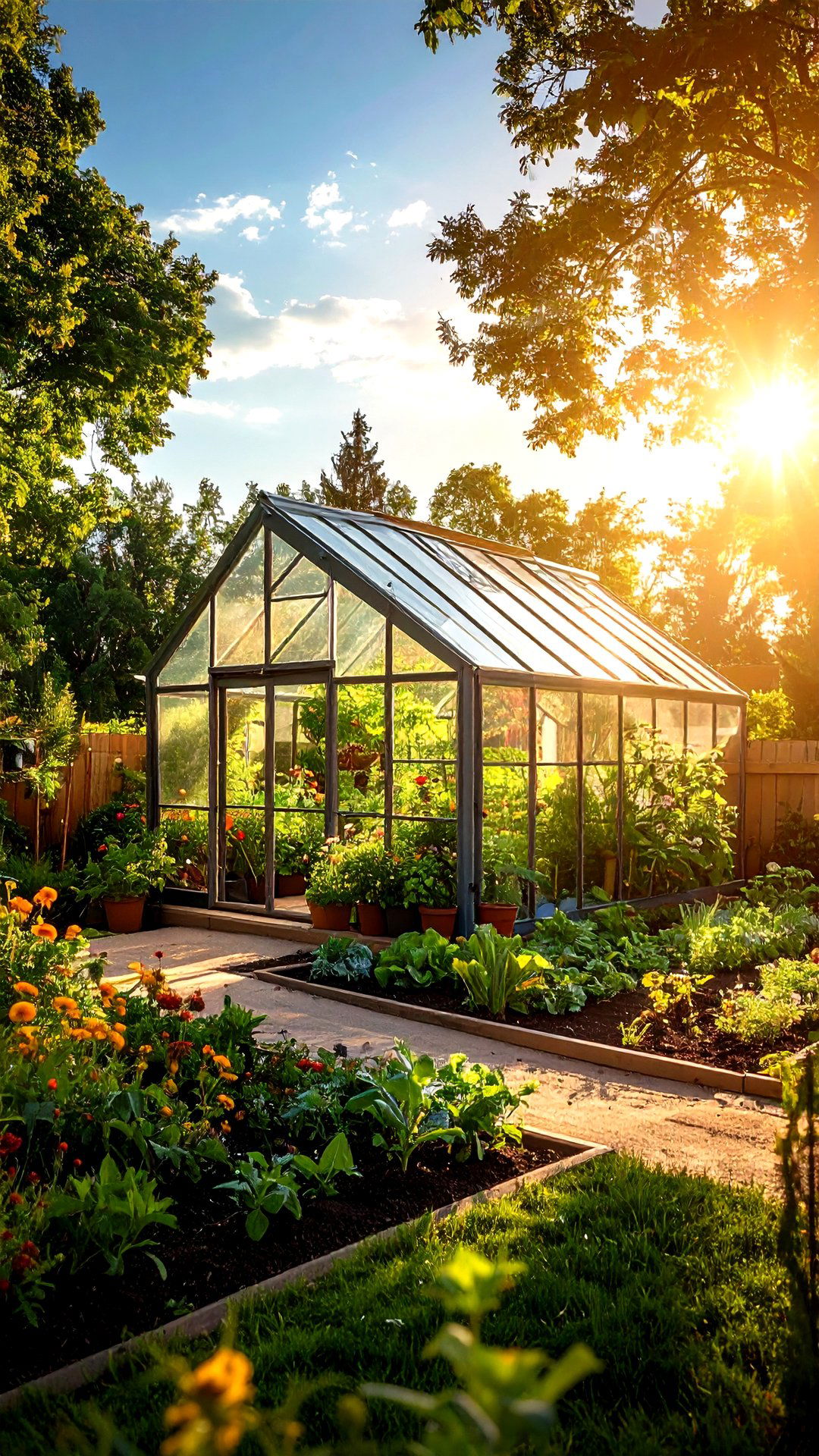
Before digging footings, survey fences, walls, and trees to map warm pockets and frost hollows. RHS microclimate advice urges gardeners to record where cold air pools or where morning sun strikes earliest — data that can lift yields dramatically once a corner greenhouse is installed. Shifting the site just one meter can spare you hours of supplemental heating.
24. Multi-Level Propagation Corner Greenhouse
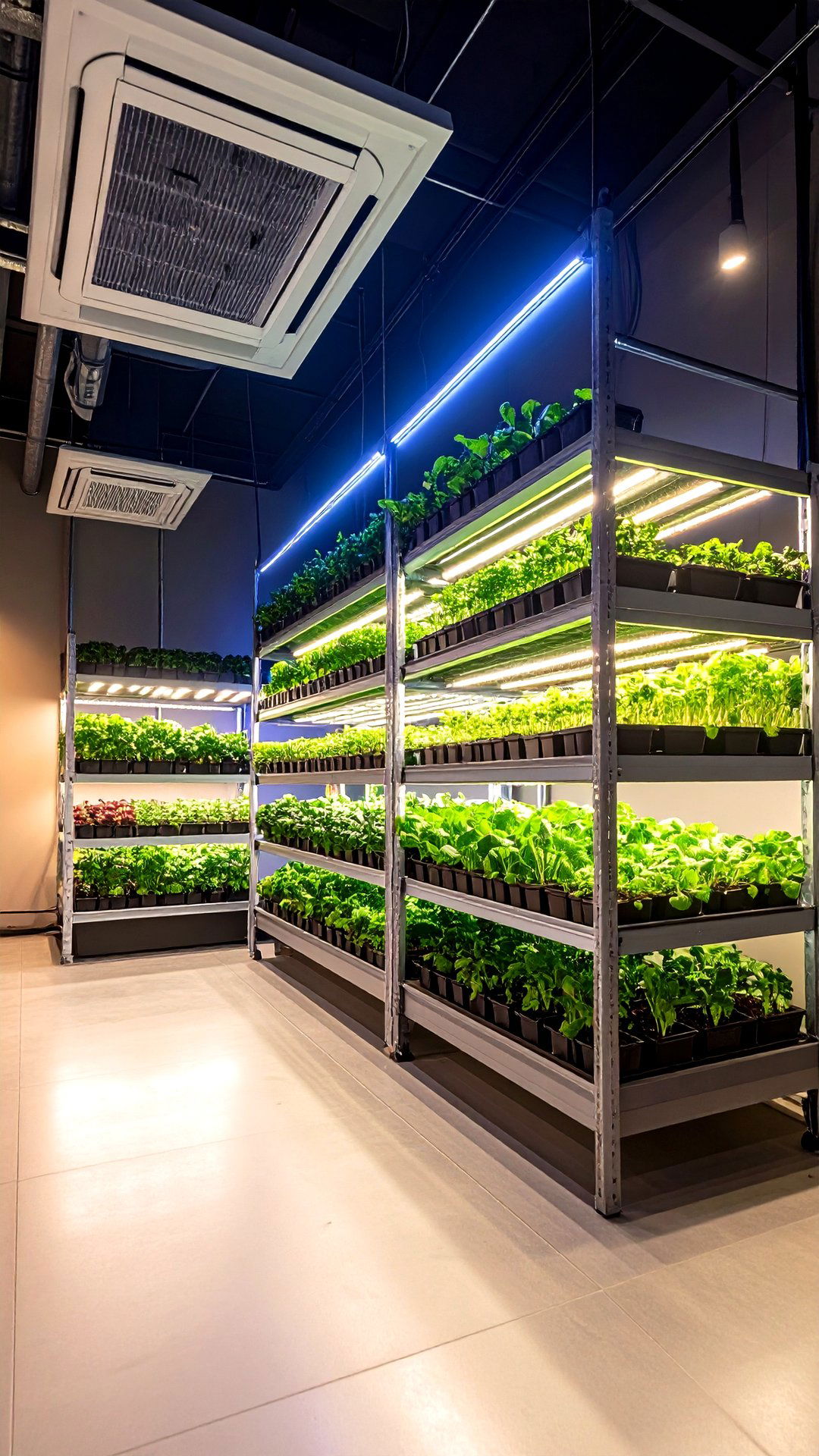
Unlike single-bench layouts, stacking propagation tiers along the blind corner wall triples seedling capacity. University guides on season extension suggest opening mid-height vents on bright days to vent heat from upper shelves while lower flats stay cozy under row cover. Use LED strip lights beneath each shelf to ensure uniform growth even when daylight angles are awkward.
25. Herb Spiral Inside a Corner Greenhouse
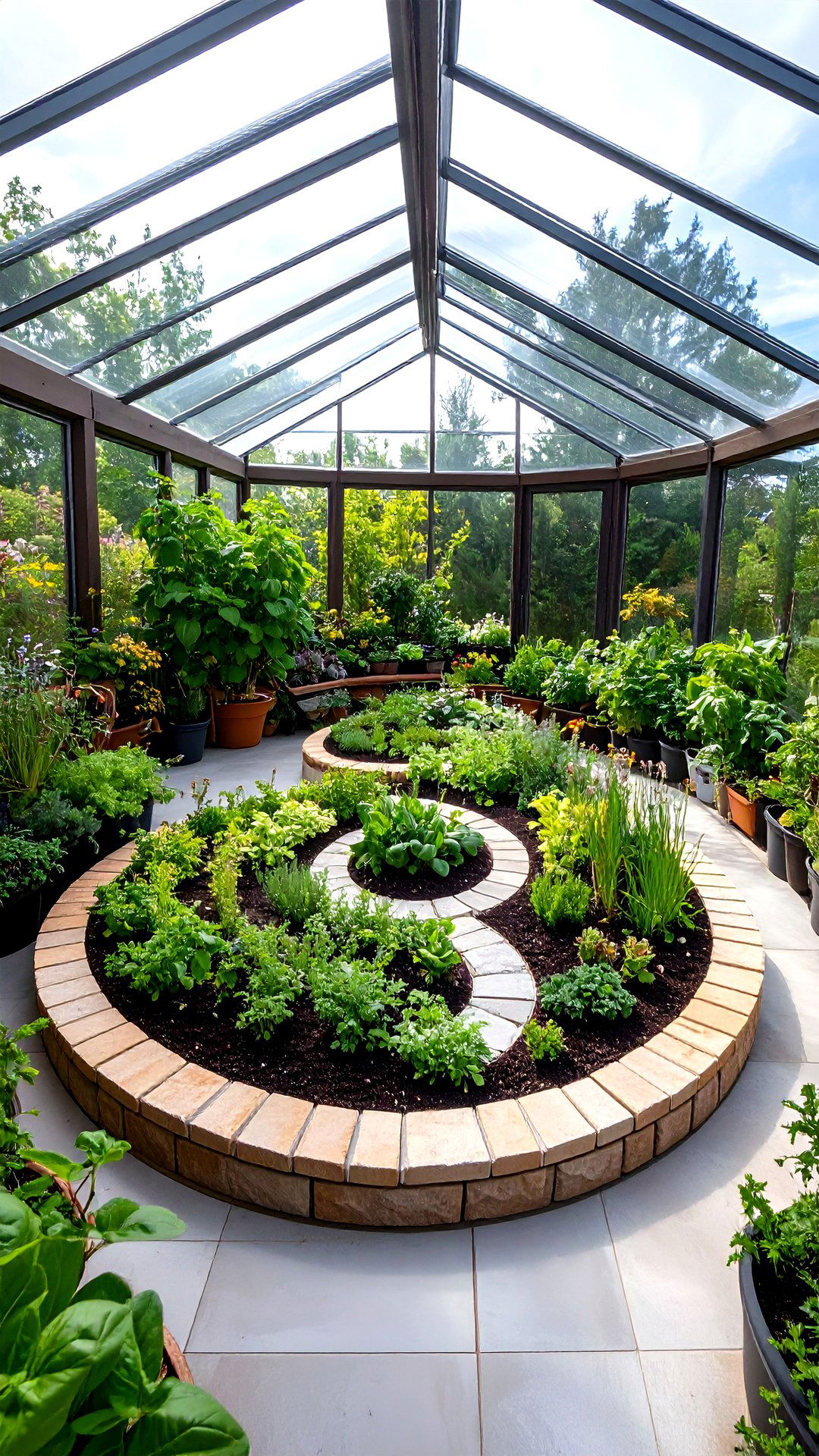
Finally, a stone or block herb spiral makes sculptural use of vertical space inside a corner greenhouse. Spiral beds create micro-zones — arid thyme at the top, moisture-loving mint in lower pockets — mirroring passive solar stratification. Free DIY greenhouse plans from The Spruce demonstrate integrating masonry spirals into modest frames for aesthetic punch and year-round herb supply.
Conclusion:
A thoughtfully planned corner greenhouse — whether a thrifty cold-frame pair or a high-tech hexagon — can turbo-charge harvests, shelter tender ornamentals, and unlock fresh design potential in yards often dismissed as “dead space. ” By matching structure to microclimate, embracing vertical growing techniques, and weaving in passive solar or automated venting, gardeners turn forgotten angles into vibrant, year-round biofactories that nourish both table and spirit.


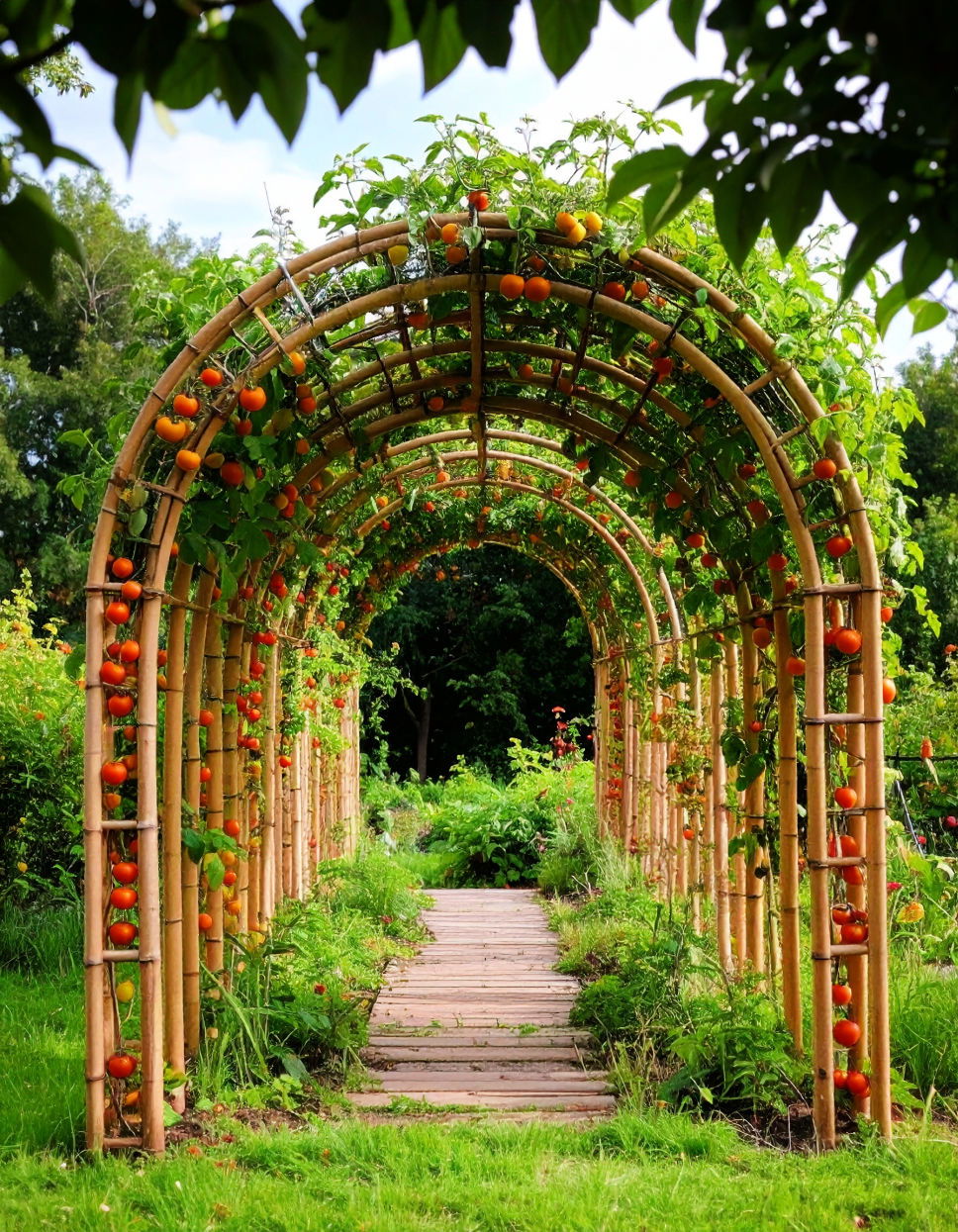
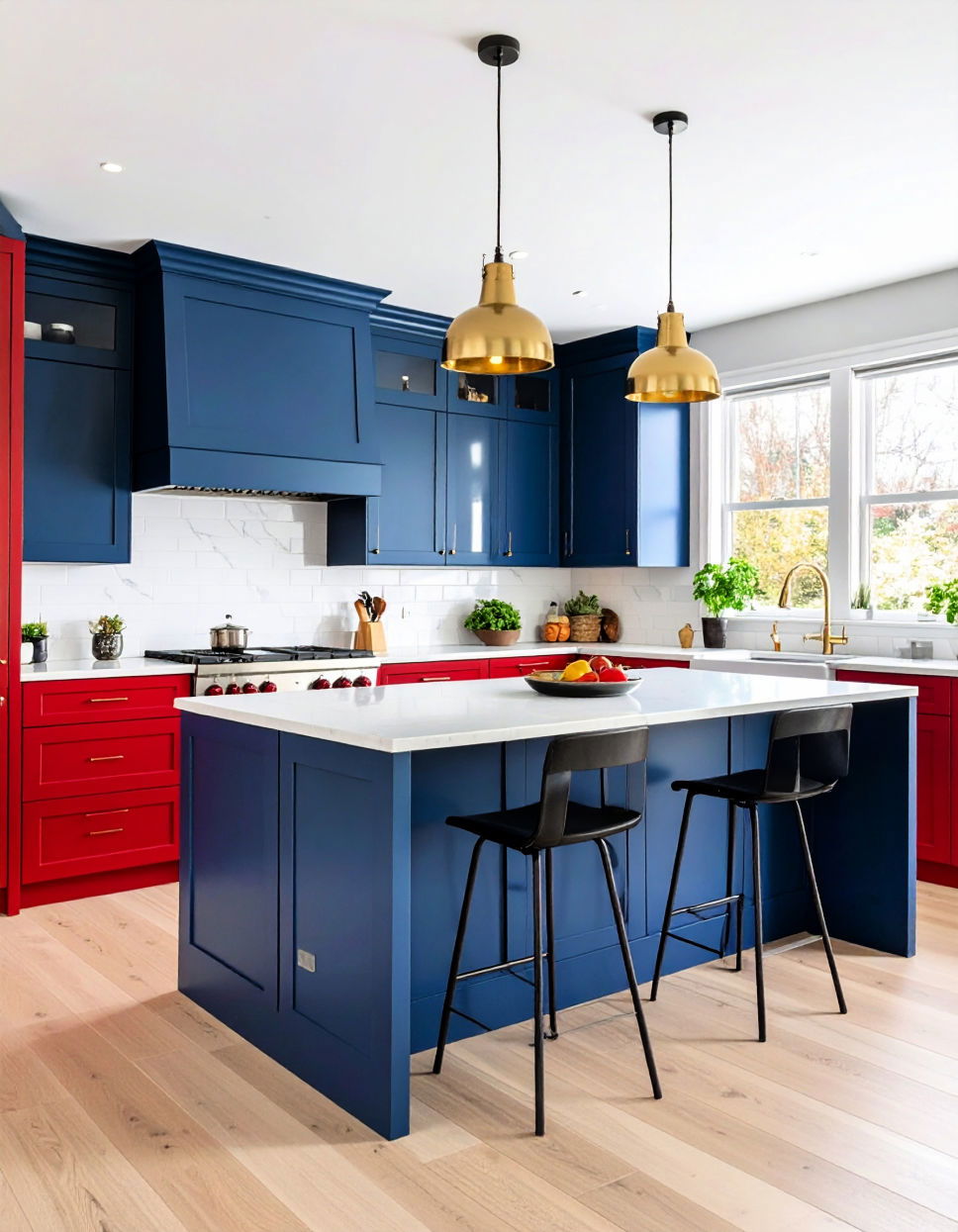

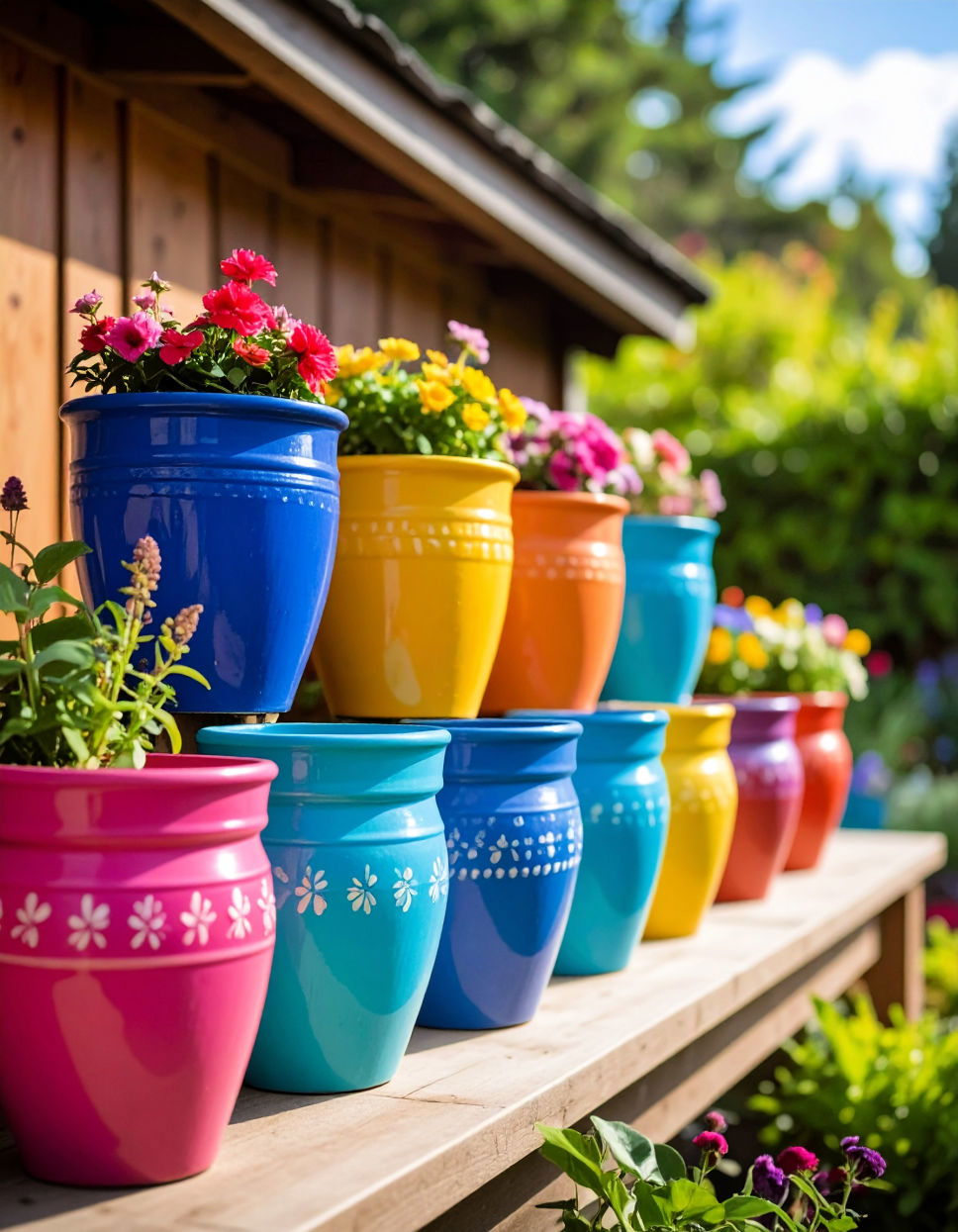
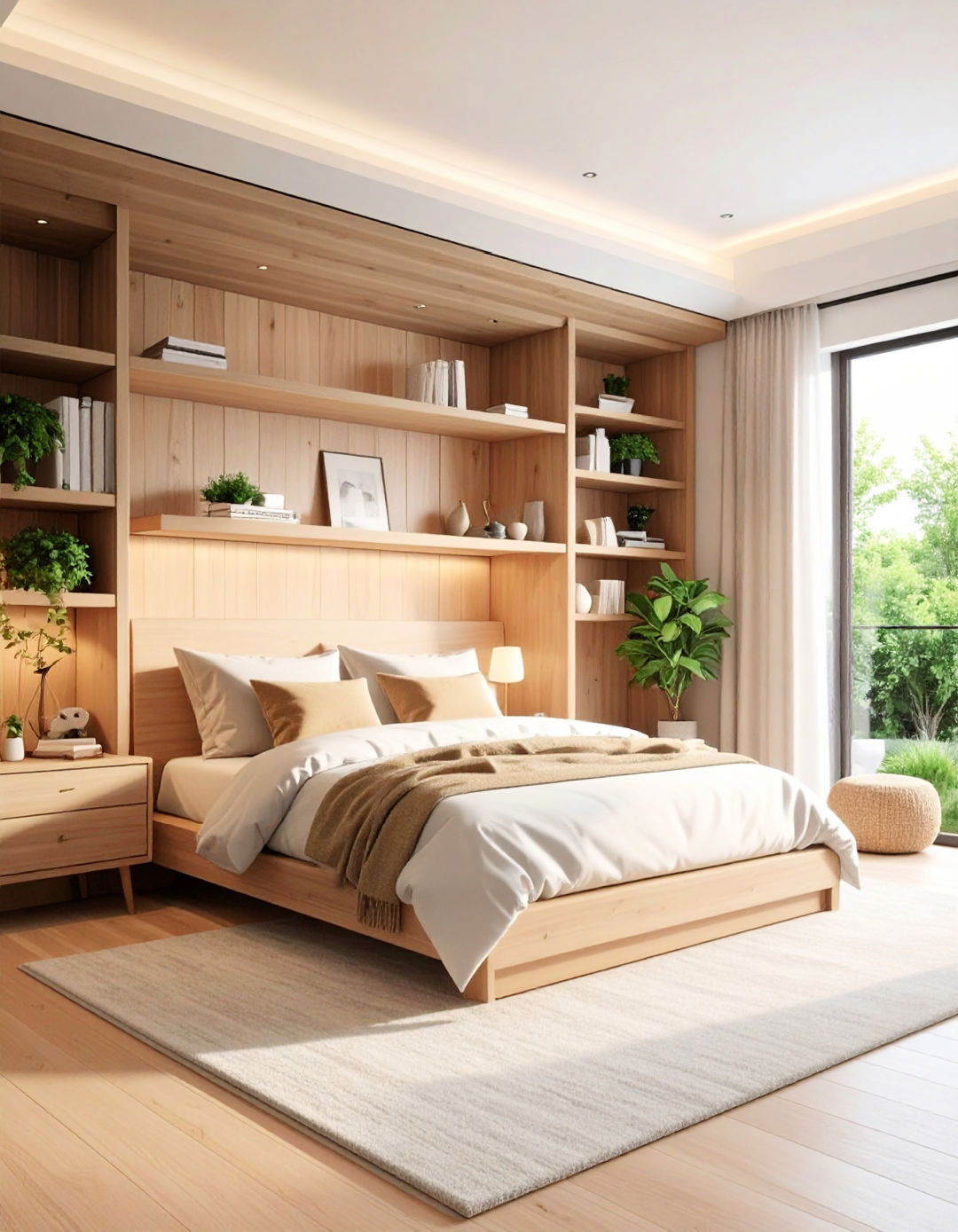
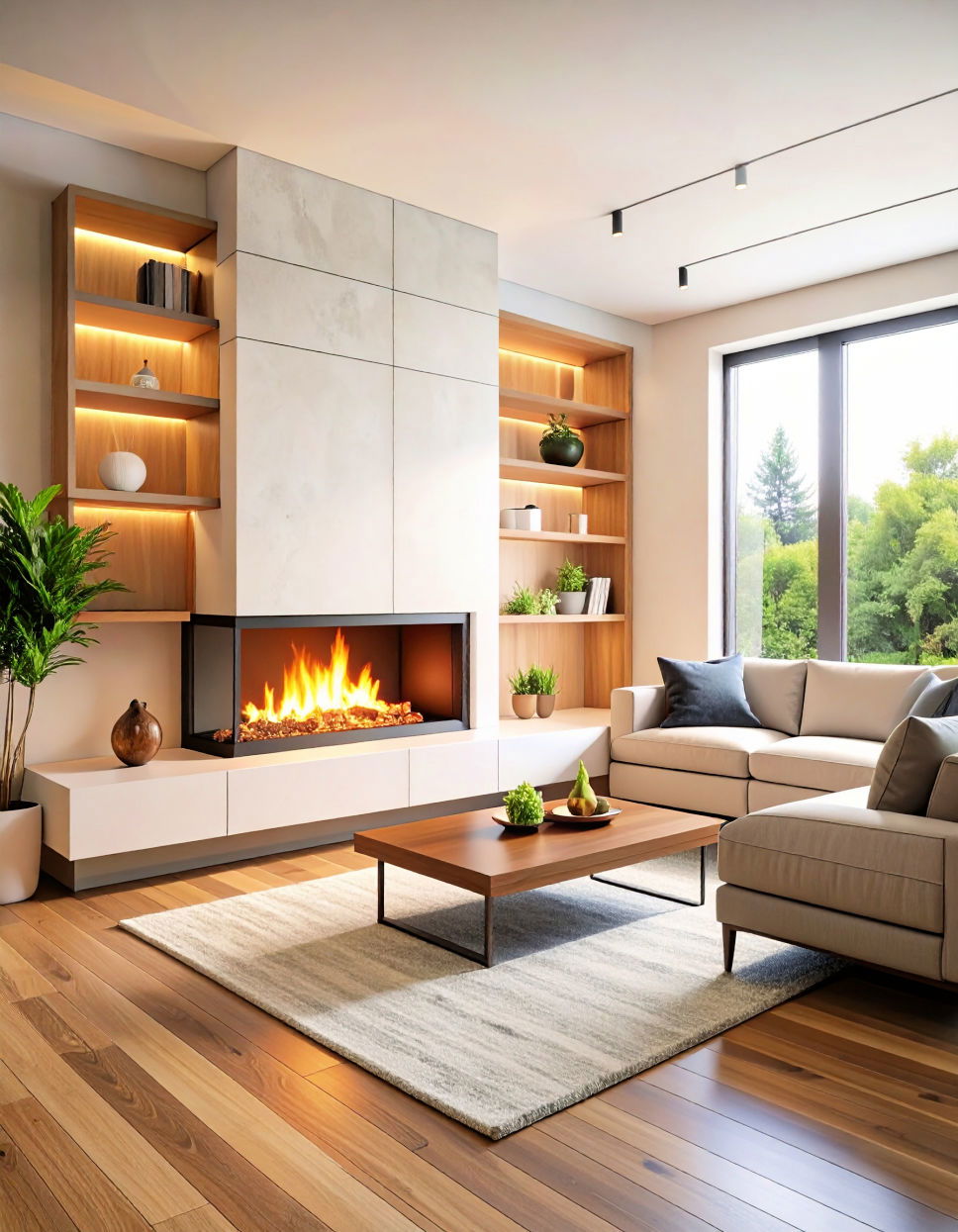
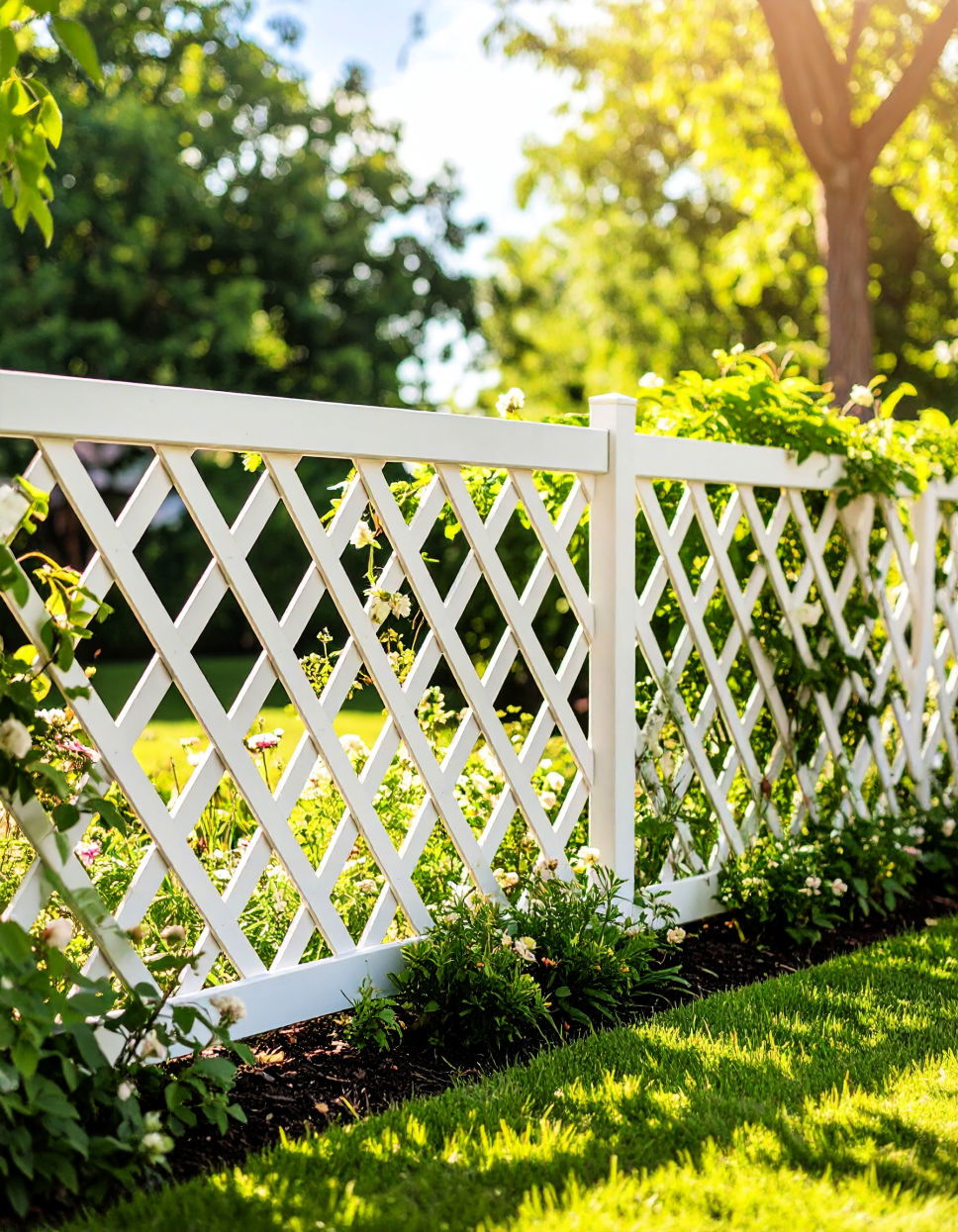
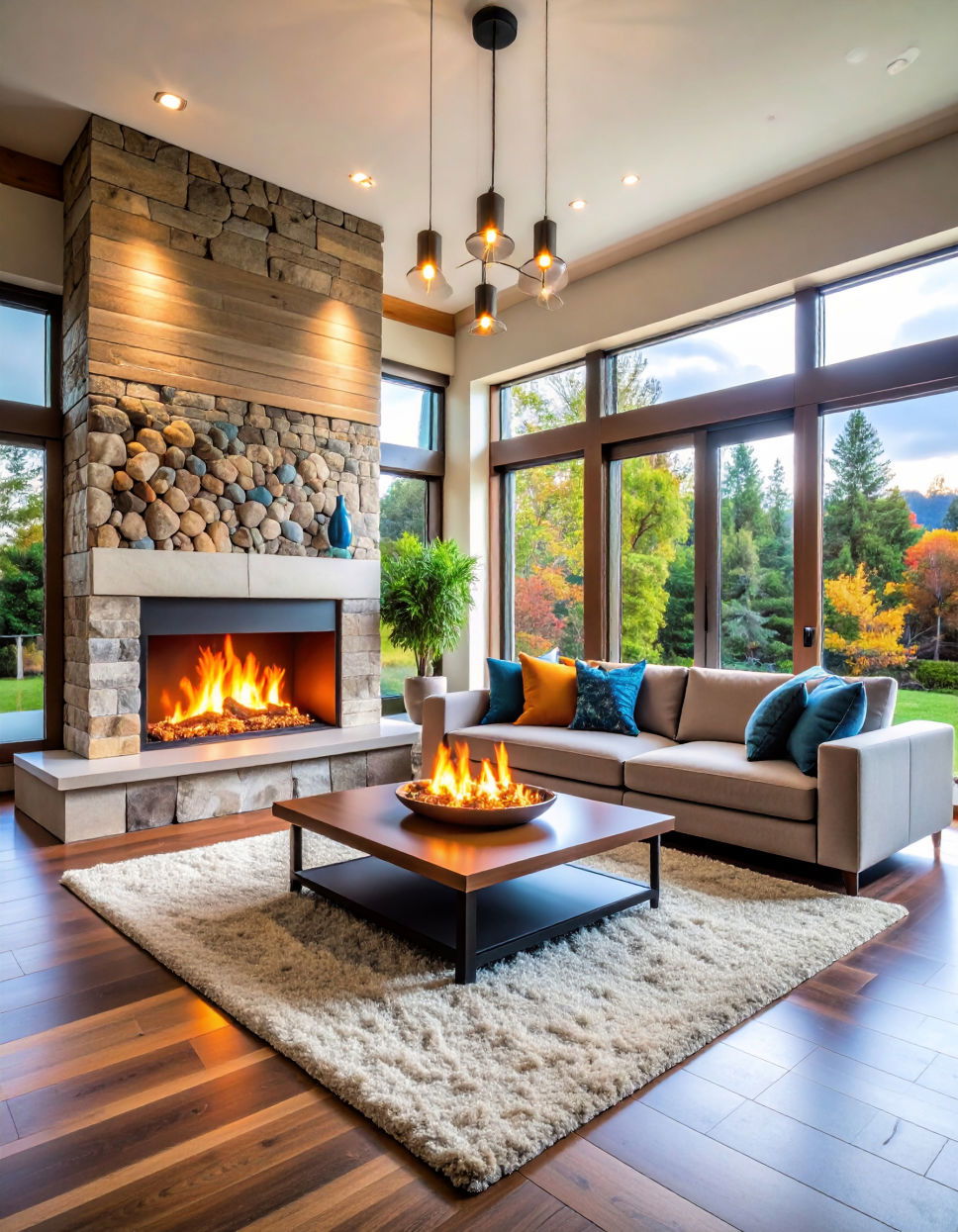
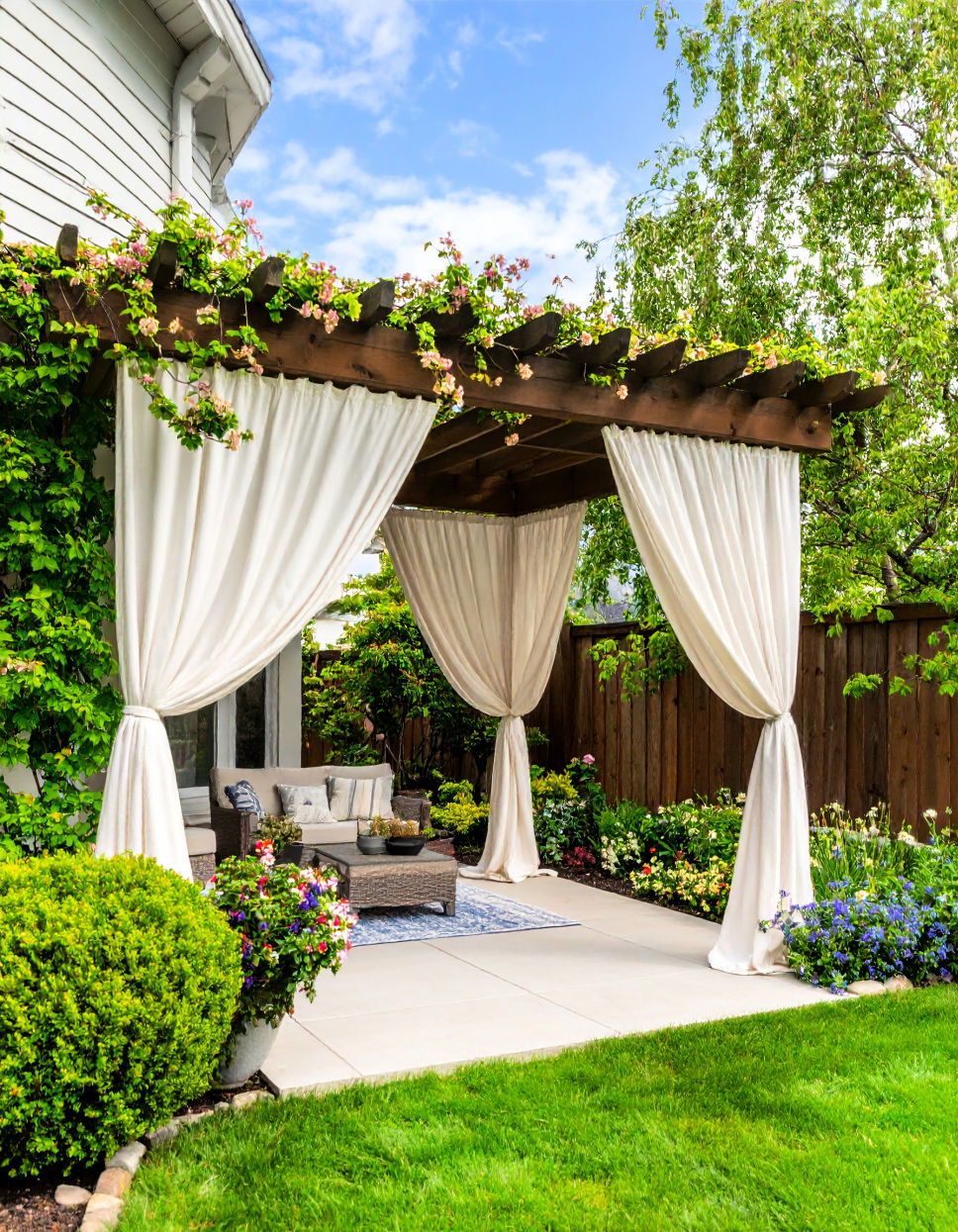
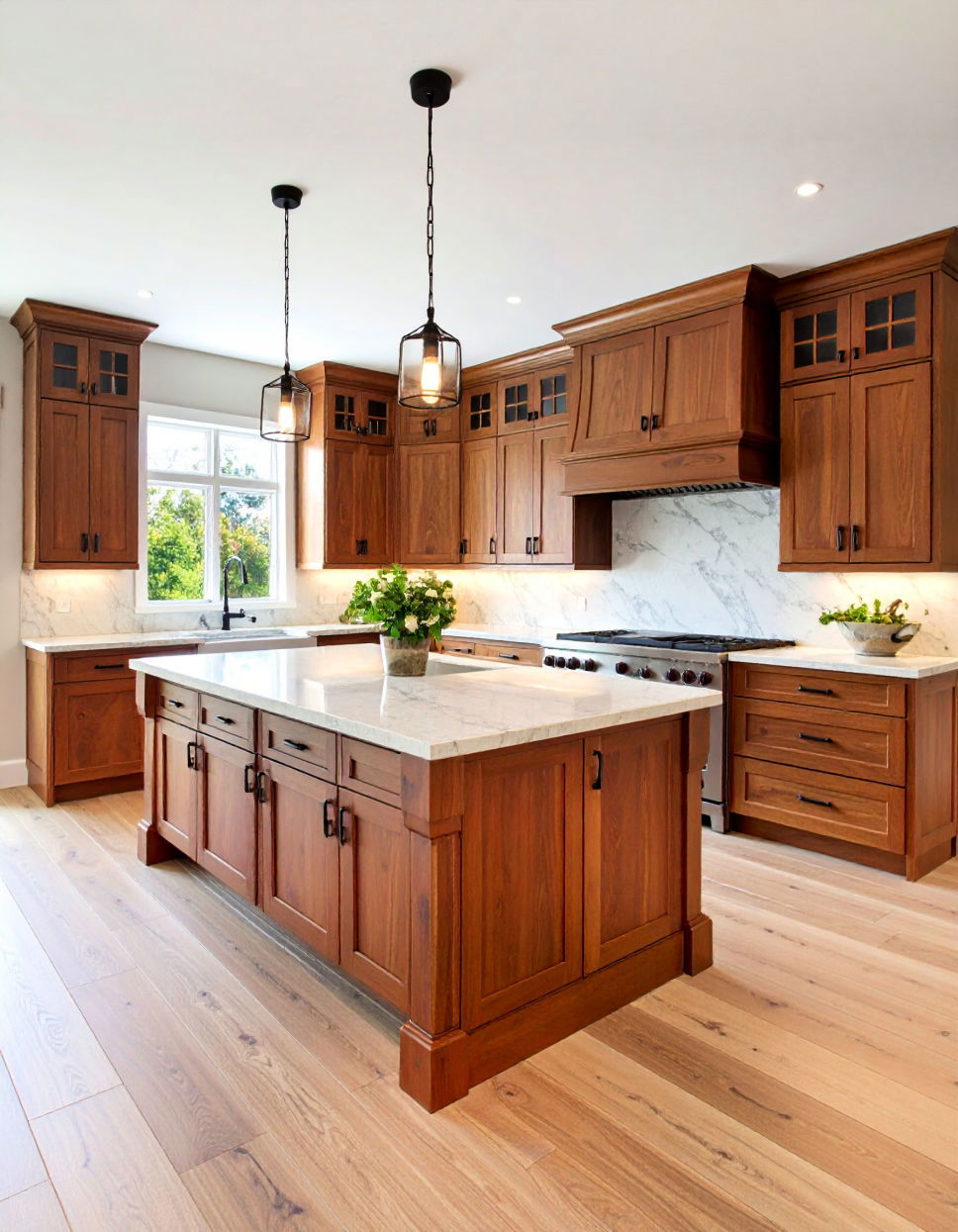
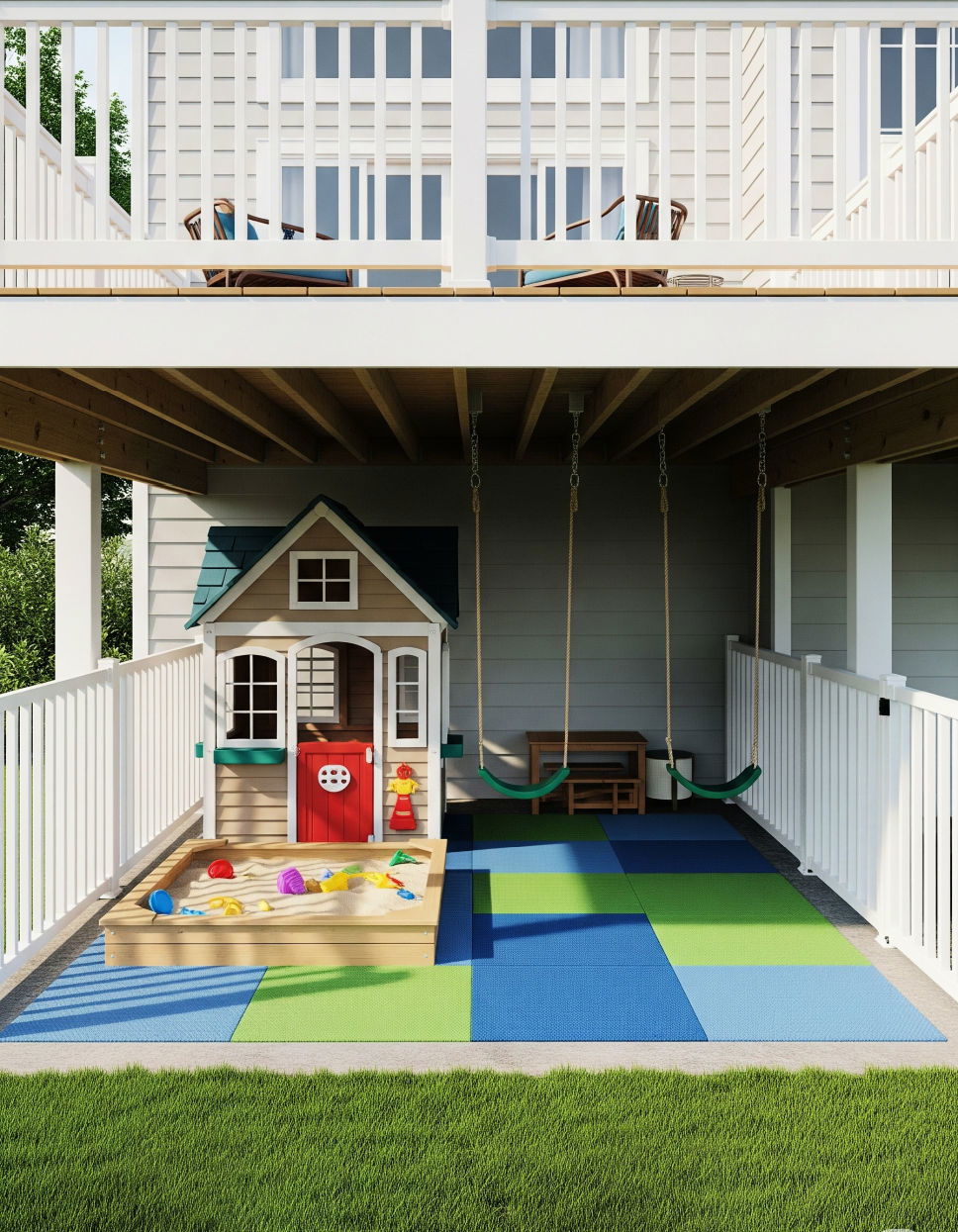
Leave a Reply